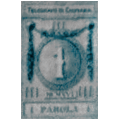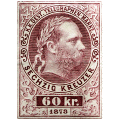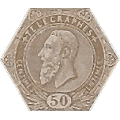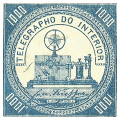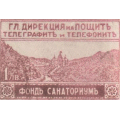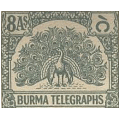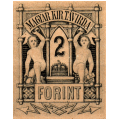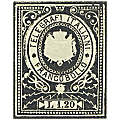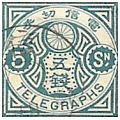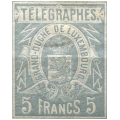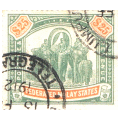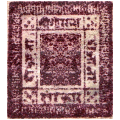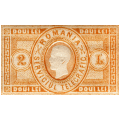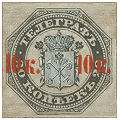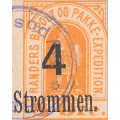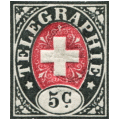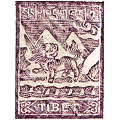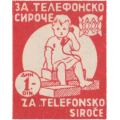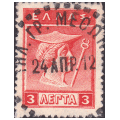| अनुवाद |
Übersetzen sie |
WORKING
|
Traduisez |
ترجم |
| перевести |
Traduca |
Traduzca |
翻译 |
|
Telegraph stamps of the World
Click here for a site-map. |
Select currency. Default = GBP (1.0)
|

I have brought these prices up to date and added currency selection.
I have added some items using 'RH' numbers (Revised Hiscocks)
to avoid conflicts.
CheckList Setup |
AUSTRIA.
Steve Hiscocks wrote:
The 'Government' telegraph stamps of Austria closely parallel those of Hungary (qv), as one might expect, in that they were introduced in 1873
(July), changed from lithographed to engraved versions of essentially the same design in 1874, and went out of use on 1 April 1879. They were,
however, preceded by those of a private company, Wiener Privat-Telegrafen-Gesellschaft (Vienna Private Telegraph Co.), which issued stamps
from 1870 until the company was (presumably) nationalized in 1873.
The WPTG stamps were in two halves, the lower being a receipt, and were presumably used rather as those of India, Uganda, Sudan, Ceylon, etc., in
which both the sender and the company retained evidence of payment. Lower halves are sometimes seen and it was presumably that which was
retained by the customer (unlike most countries where it was the top half). The vast majority of specimens found today have a black line printed or
ruled in ink across the upper half. These are remainders which were sold off after the company ceased to operate. These stamps are listed mint,
cancelled and used (bottom half).
The 'Government' stamps present the problem of multiple and variable perforations familiar to anyone who has ever tried to make sense of the
Austrian fiscal stamps of the period. Morley lists dozens of varieties while L. W. Fulcher and Dr Kalckhoff, through Morley's Philatelic Journal of August
1900, add more. Dr Kalckhoff reported however that it was unrealistic to distinguish between say 9 and 9½ or 10, 10½ and 11 since perforations
varied such as to give these within a single line across or down a sheet. I have not myself been able to examine anything like the quantity studied by
Dr Kalckhoff (especially in sheet form) and have adopted his practice of distinguishing 9½ (i.e. 9 to 9½), 10½ (i.e. 10 to 11), 12, 13 and
compounds of these. It is said to be possible to distinguish three different machines in the 10–11 range by hole characteristics but I am not at this
stage able to advise in detail. For some obscure reason large numbers of these stamps were overprinted 'Specimen' and these seem in fact to be
more common than ordinary mint.
My note:
According to John Barefoot, these were actually Typographed, not Lithographed.
From 1858 to 1899 the currency was 100 kreuzer = 1 Gulden/Florin.
Then 100 heller = 1 Krone.
1870 Private Telegraph stamps - Wiener Privat-Telegrafen-Gesellschaft. White wove paper without watermark. Imperf.
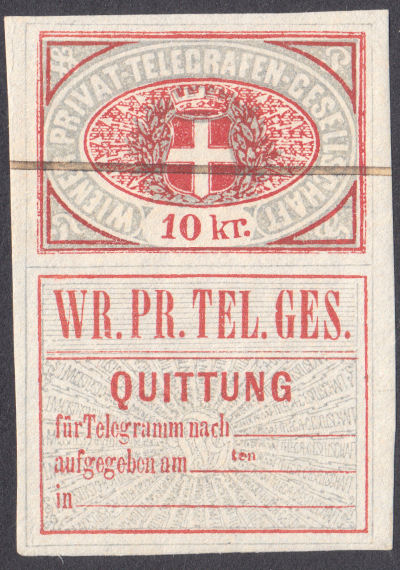 |
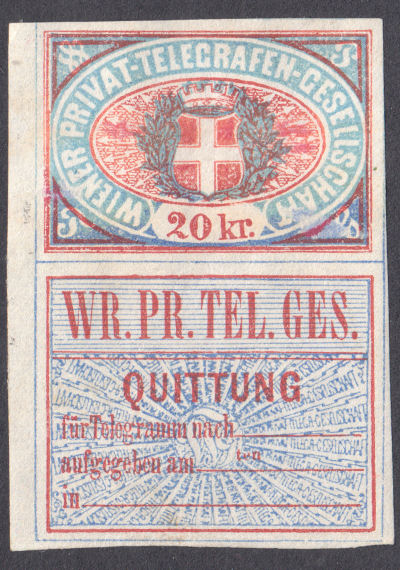 |
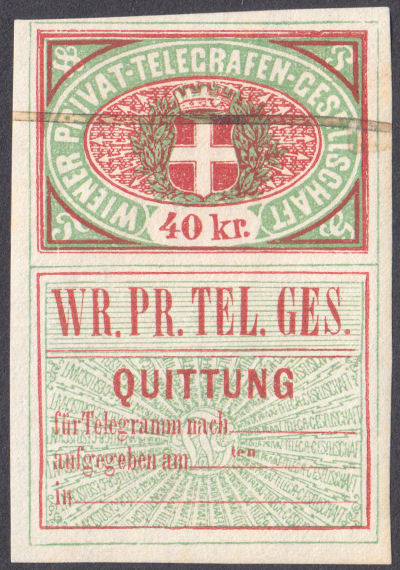 |
| 10kr. Remainder - H1a. |
20kr. - H2. |
40kr. Remainder - H3a. |
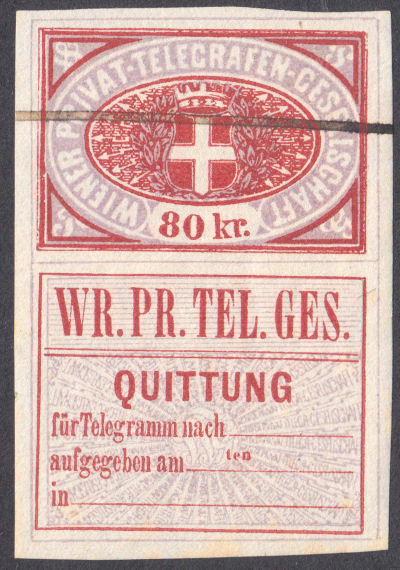 |
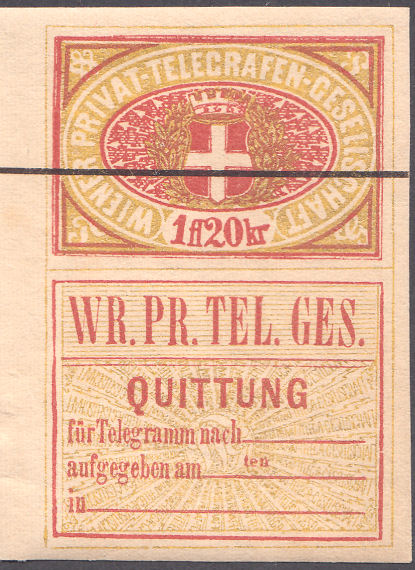 |
| 80kr. Remainder - H4a. |
1Fl.20kr Remainder - H5a. |
I would like to be able to illustrate a used example, but I have not seen any. Can anyone provide a scan ?
| Hisc. |
Description |
Mint |
Used |
| H1 |
10Kr scarlet and bluish grey |
100.00 |
90.00 |
| H1a |
cancelled (black line across upper half) |
10.00 |
- |
| H2 |
20Kr scarlet and bright blue |
100.00 |
90.00 |
| H2a |
cancelled (black line across upper half) |
8.00 |
- |
| H3 |
40Kr scarlet and light green |
100.00 |
90.00 |
| H3a |
cancelled (black line across upper half) |
15.00 |
- |
| H3b |
green printed on reverse |
500.00 |
- |
| H4 |
80Kr scarlet and lilac |
100.00 |
90.00 |
| H4a |
cancelled (black line across upper half) |
15.00 |
- |
| H5 |
1F 20Kr scarlet and bistre |
150.00 |
120.00 |
| H5a |
cancelled (black line across upper half) |
10.00 |
- |
Government Telegraph Stamps.
There are differences in the background of the value tablets.
 |
 |
| Hiscocks Type 3 |
Hiscocks Type 2 |

 |
Line-engraved Type Interestingly there are differences between examples. The cross-hatch pattern is indicative of the later series, but may not be apparent in more heavily inked examples.
Though singles are very common, I do not recall seeing multiples. In principle it should be possible to identify position from this cross-hatching, if any complete sheets exist. |
1873 (July). Franz-Josef I. Typographed on white wove paper without watermark. Various perfs. as indicated.
Beware, examples of the later (cheap) type are often sold as the earlier type. This is in part due to confusion of terminology.
The first series were printed by Typography, otherwise known as letterpress (buchdruck in German) or surface printing. The ink comes from the high points on the plate.
The initial preparation involves engraving a die, rather than Lithography that does not. These are described as lithographed in some catalogues (e.g. Yvert et Tellier).
I have put together a page explaining the differences of the printing techniques.
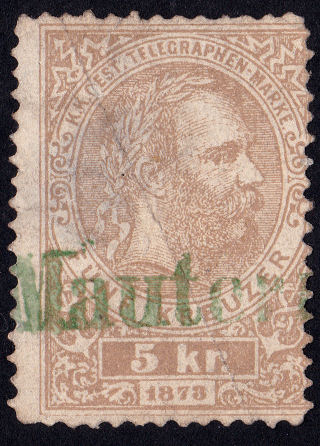 |
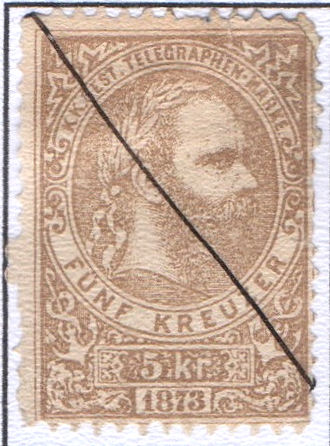 |
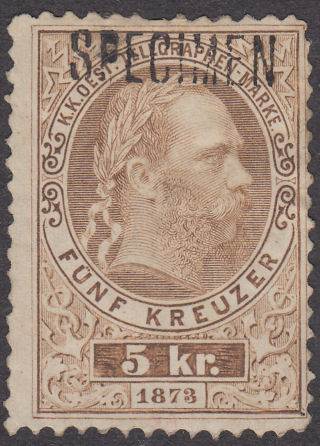 |
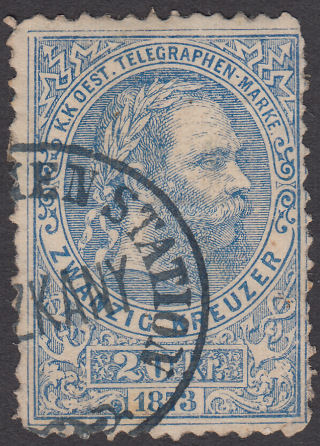 |
| Hiscocks H6 |
Hiscocks H7 courtesy of Les and Paul Bottomley. |
Hiscocks H15a specimen, for comparison |
Hiscocks H8 |
On the Specimens, there appear to be two batches, the ones at the top, as above, and others, across the middle.
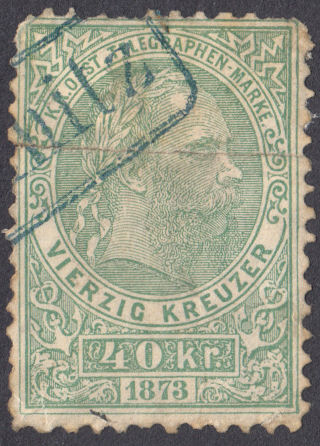 |
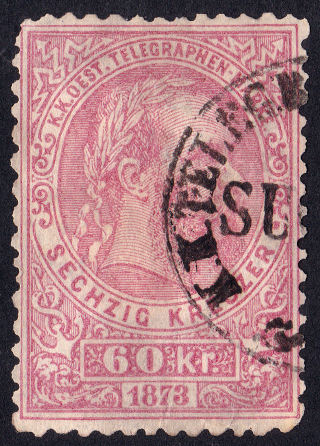 |
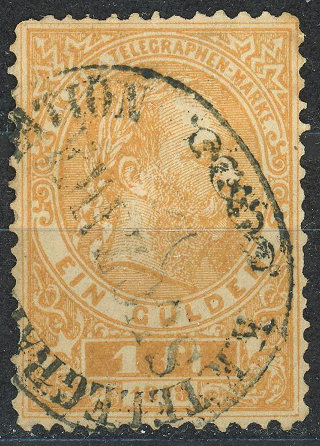 |
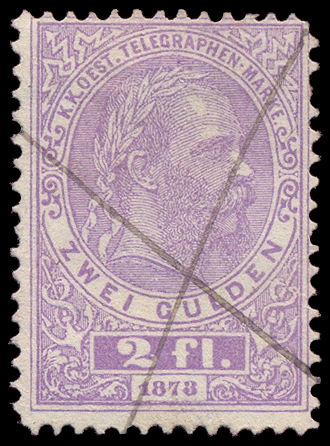 |
| Hiscocks H10a |
Hiscocks H12 |
Hiscocks H13b courtesy of RareRevenues on eBay.
Click image to see listing. |
Hiscocks H14 courtesy of Rolf Lamprecht. |
John Barefoot says of the perforations : "the state printing works had a good number of machines, all with different perf settings;
the work was labour intensive and the different machines were used indiscriminately as work stations became free."
| Hisc. |
Type |
Typo. Description |
Mint |
Used |
| H6 |
2 |
5Kr deep brown perf. 10½ |
80.00 |
65.00 |
| H6a |
|
perf. 9½ x 10½ |
80.00 |
65.00 |
| H6b |
|
light brown perf. 10½ |
80.00 |
65.00 |
| H6c |
|
light brown perf. 9½ x 10½ |
100.00 |
80.00 |
| H7 |
3 |
5Kr deep brown perf. 10½ |
60.00 |
50.00 |
| H7a |
|
light brown |
60.00 |
50.00 |
| H8 |
3 |
20Kr deep blue perf. 10½ |
80.00 |
65.00 |
| H8a |
|
perf. 9½ |
100.00 |
80.00 |
| H8b |
|
perf. 9½ x 10½ |
80.00 |
65.00 |
| H8c |
|
blue perf. 10½ |
100.00 |
80.00 |
| H9 |
2 |
25Kr black (November) perf. 10½ |
1500.00 |
1000.00 |
| H9a |
|
perf. 9½ x 10½ |
1500.00 |
1000.00 |
| H10 |
3 |
40Kr deep green perf. 10½ |
80.00 |
65.00 |
| H10a |
|
perf. 9½ |
120.00 |
96.00 |
| H10b |
|
perf. 9½ x 10½ |
100.00 |
80.00 |
| H11 |
2 |
50Kr deep lilac grey (shades) perf. 10½ |
600.00 |
480.00 |
| H11a |
|
perf. 9½ x 10½ |
650.00 |
520.00 |
| H12 |
3 |
60Kr deep carmine perf. 10½ |
100.00 |
80.00 |
| H12a |
|
perf. 9½ |
120.00 |
96.00 |
| H12b |
|
perf. 9½ x 10½ |
120.00 |
96.00 |
| H13 |
2 |
1F deep yellow perf. 10½ |
2000.00 |
400.00 |
| H13a |
|
perf. 9½ x 10½ |
2000.00 |
400.00 |
| H13b |
|
yellow-orange perf. 10½ |
2000.00 |
400.00 |
| H13c |
|
yellow-orange perf. 9½ x 10½ |
2000.00 |
400.00 |
| H14 |
2 |
2F deep reddish violet perf. 10½ |
550.00 |
320.00 |
| H14a |
|
perf. 9½ x 10½ |
700.00 |
350.00 |
| H14b |
|
perf. 12 |
700.00 |
350.00 |
The perforations on these stamps are very erratic and Hiscocks gave 'categories' of perforation rather than precise perforation.
Specimens seem more common than ordinary mint.
Hiscocks added the following note:
Note.
For reasons explained in the introduction to Austria perforation, types are grouped into 9½ (i.e. 9 to 9½),
10½ (i.e. 10 to 11), 12, 13 and compounds of these both above and below.
'Perf. 10½' thus includes anything from 10 x 11 to 11 x 10 since such variations can be found within
single sheets and are not therefore of philatelic significance. |
1874-1876 As above (type 2 only) but line-engraved (intaglio). Various perforations as indicated.
These are usually described as simple 'engraved', since the first series were initially described as 'Litho.' and 'engraved' would distinguish them.
It is now known that the first series was in fact typographed, which also involves engraving a die, so 'line-engraved' would be a better description.
The ink on the stamps come from ink held in the grooves in the printing plate. This makes fine detail more visible, though is not good for large areas of colour.
This explains the cross-hatching behind the values, though I'm puzzled why it was not simply done on the master die.
I do not know how many stamps were in a sheet, and I do not recall seeing blocks of these, though individual stamps are common.
The Michel catalogue, whilst getting the first series correct, lists this series as Lithographed, which is plain wrong.
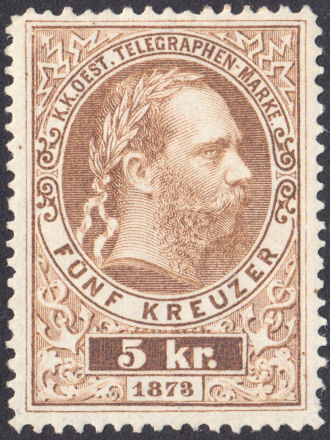 |
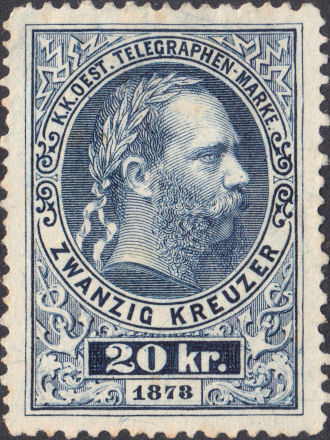 |
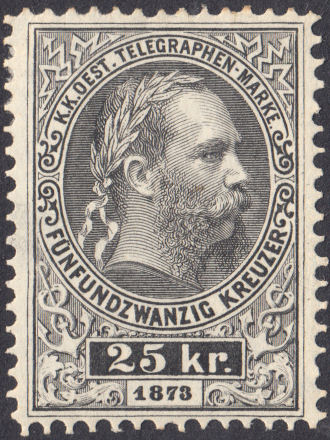 |
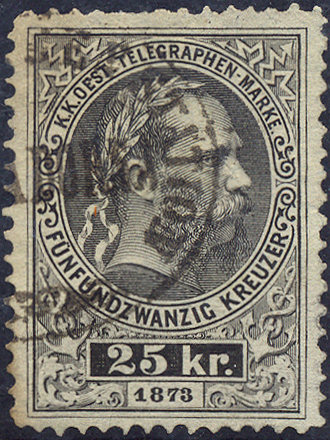 |
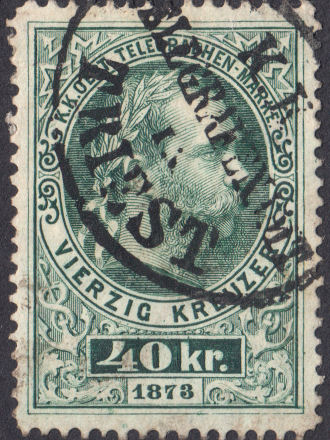 |
| Hiscocks H15b Perf. 12 |
Hiscocks H16b Perf. 11¾ |
Hiscocks H17a Perf. 10½ |
Hiscocks H17a used, courtesy of Rolf Lamprecht. |
Hiscocks H18b Perf. 12 with typical cancel. |
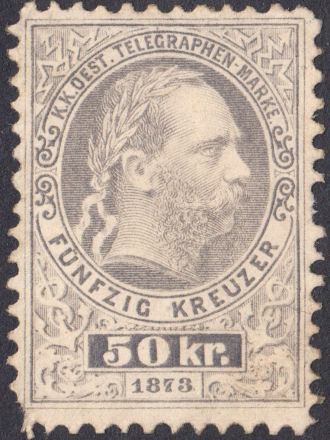 |
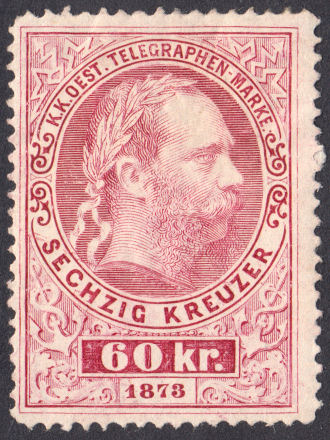 |
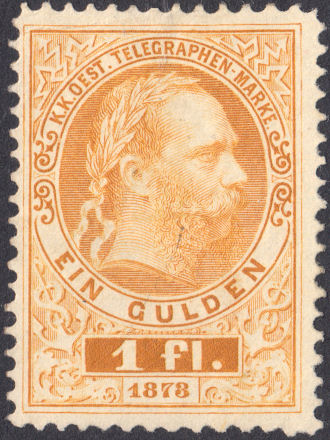 |
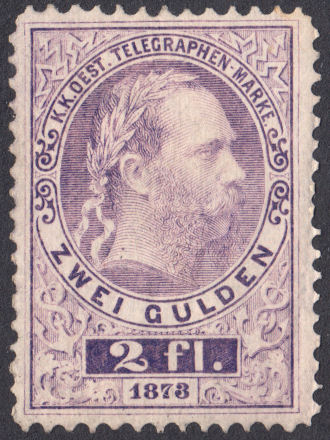 |
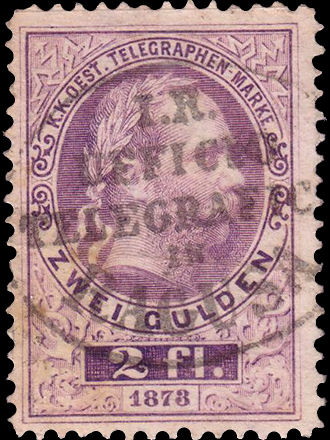 |
| Hiscocks H19 Perf. 9½ x 9¼ |
Hiscocks H20c Perf. 12¾ |
Hiscocks H21a Perf. 10½ |
Hiscocks H22 Perf. 10½ x 10¾ |
Hiscocks H22 used Perf. 10½ x 10¾
courtesy of Rolf Lamprecht. |
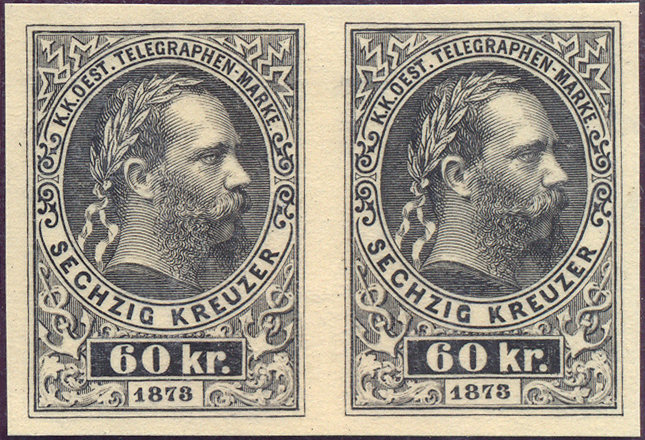
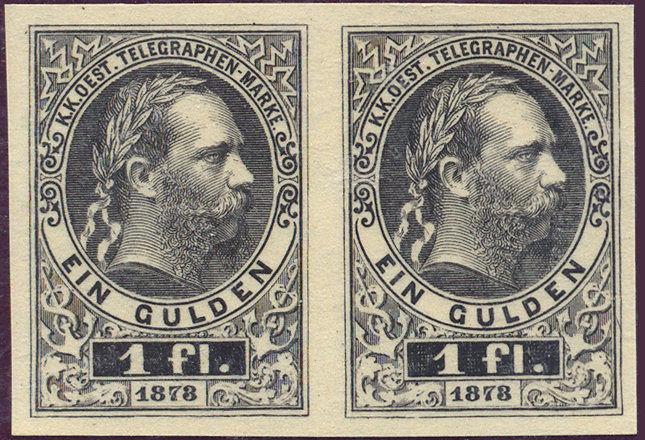
H20 and H21 proofs, courtesy of Rolf Lamprecht. Notice the differences in the value tablets.
| Hisc. |
Type |
Description |
Mint |
Used |
| H15 |
2 |
5Kr deep brown (shades) (1876) perf. 9½ |
6.00 |
6.00 |
| H15a |
|
perf. 10½ |
3.00 |
3.00 |
| H15b |
|
perf. 12 |
2.25 |
2.25 |
| H15c |
|
perf. 13 |
3.00 |
3.00 |
| H15d |
|
perf. 10½ x 13 |
9.00 |
9.00 |
| H16 |
2 |
20Kr indigo (shades to deep blue) perf. 9½ |
4.50 |
4.50 |
| H16a |
|
perf. 10½ |
2.25 |
2.25 |
| H16b |
|
perf. 12 |
2.25 |
2.25 |
| H16c |
|
perf. 13 |
6.00 |
6.00 |
| H16d |
|
perf. 10½ x 9½ |
9.00 |
9.00 |
| H16e |
|
perf. 10½ x 12 |
9.00 |
9.00 |
| H16f |
|
perf. 10½ x 13 |
15.00 |
15.00 |
| H17 |
2 |
25Kr black perf. 9½ |
9.00 |
9.00 |
| H17a |
|
perf. 10½ |
3.00 |
3.00 |
| H17b |
|
perf. 10½ x 9½ |
9.00 |
9.00 |
| H17c |
|
perf. 12 |
3.00 |
3.00 |
| H17d |
|
perf. 13 |
4.50 |
4.50 |
| H17e |
|
perf. 10½ x 12 |
12.00 |
12.00 |
| H17f |
|
perf. 10½ x 13 |
12.00 |
12.00 |
| H18 |
2 |
40Kr bottle green(shades to deep green) perf. 9½ |
9.00 |
9.00 |
| H18a |
|
perf. 10½ |
3.00 |
3.00 |
| H18b |
|
perf. 12 |
3.00 |
3.00 |
| H18a |
|
perf. 12½ |
4.50 |
4.50 |
| H18c |
|
perf. 13 |
6.00 |
6.00 |
| H18d |
|
perf. 10½ x 9½ |
9.00 |
9.00 |
| H18e |
|
perf. 10½ x 12 |
9.00 |
9.00 |
| H18f |
|
perf. 10½ x 13 |
3.00 |
3.00 |
| H18g |
|
perf. 12 x 13 |
9.00 |
9.00 |
| H18h |
|
perf. 12 x 12½ |
9.00 |
9.00 |
|
|
| Hisc. |
Type |
Description |
Mint |
Used |
| H19 |
2 |
50Kr deep lilac-grey perf. 9½ |
12.00 |
12.00 |
| H19a |
|
perf. 10½ |
4.00 |
4.00 |
| H19b |
|
perf. 12 |
4.00 |
4.00 |
| H19c |
|
perf. 13 |
6.00 |
6.00 |
| H19d |
|
perf. 10½ x 12 |
9.00 |
9.00 |
| H19e |
|
perf. 10½ x 13 |
12.00 |
12.00 |
| H20 |
2 |
60Kr deep carmine perf. 9½ |
12.00 |
12.00 |
| H20a |
|
perf. 10½ |
12.00 |
12.00 |
| H20b |
|
perf. 12 |
14.00 |
14.00 |
| H20c |
|
perf. 12½ |
14.00 |
14.00 |
| H20d |
|
perf. 13 |
12.00 |
12.00 |
| H20e |
|
perf. 12½ x 13 |
14.00 |
14.00 |
| H21 |
2 |
1F deep orange-yellow to deep brownish yellow perf. 9½ |
15.00 |
15.00 |
| H21a |
|
perf. 10½ |
6.00 |
6.00 |
| H21b |
|
perf. 12 |
6.00 |
6.00 |
| H21c |
|
perf. 12½ |
7.50 |
7.50 |
| H21d |
|
perf. 13 |
7.50 |
7.50 |
| H21e |
|
perf. 10½ x 9½ |
9.00 |
9.00 |
| H21f |
|
perf. 10½ x 12 |
15.00 |
15.00 |
| H21g |
|
perf. 10½ x 13 |
15.00 |
15.00 |
| H22 |
2 |
2F deep reddish violet perf. 10½ |
6.00 |
6.00 |
| H22a |
|
perf. 12 |
6.00 |
6.00 |
| H22b |
|
perf. 13 |
9.00 |
9.00 |
| H22c |
|
perf. 10½ x 12 |
12.00 |
12.00 |
| H22d |
|
perf. 10½ x 13 |
12.00 |
12.00 |
| H22e |
|
perf. 12½ x 12 |
15.00 |
15.00 |
|
Hiscocks added the following 4 notes:
Note 1.
It is not clear whether the perf. 12½ quoted for several values of the engraved series is significant,
or if not, whether it is a variant on 12 or 13 — a variant of 12 seems more likely since 12¼
occurs and I have yet to see 12¾. |
| Note 2.
'Specimens' are at least as common as mint and fetch perhaps 75% of mint prices. |
Note 3.
The most common cancellation in my experience is two black pen strokes — a cross or part of
a cross depending on how many stamps were on the original form. Oval cancellations including
the name of the town and 'TELEGRAPH' or 'TELEGRAF' in various configurations, usually in
black but also in blue, etc., are also common and other cancellations, e.g. box, are known. |
Note 4.
Except in a few cases, I do not really have sufficient information to reflect relative rarities of
different perforations in the prices. I have therefore used Morley's relativities which could be
somewhat arbitrary. |
My note: Used prices are for handstamp cancels. Half price for pen cancelled.
Telegraph and Telephone cancels on postage stamps.
Images mostly provided by Rolf Lamprecht.
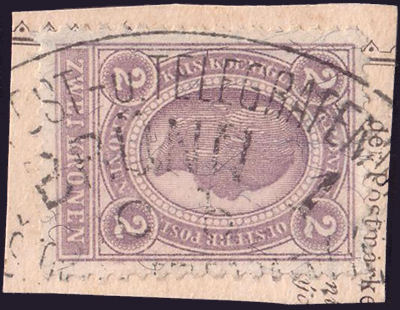 |
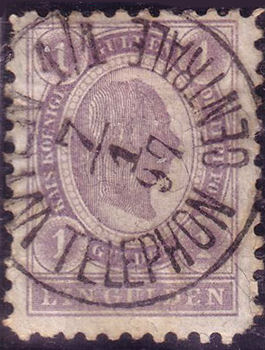 |
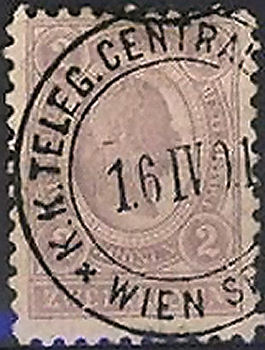 |
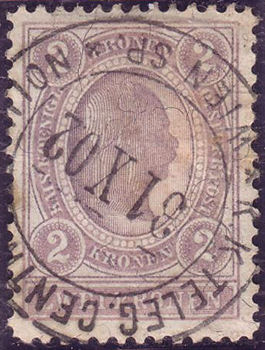 |
| Used in Brünn (Brno, now Czech Republic) |
Vienna Telephone Central, 1897 |
Vienna Telegraph Central, 1901 |
Vienna Telegraph Central, 1902 |
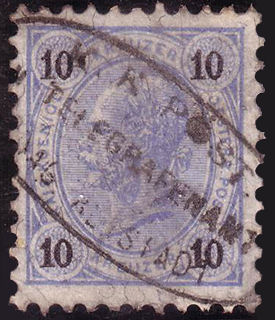 |
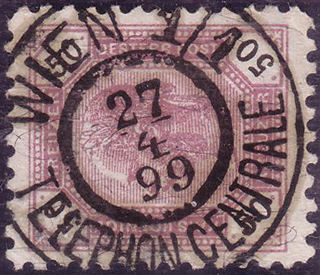 |
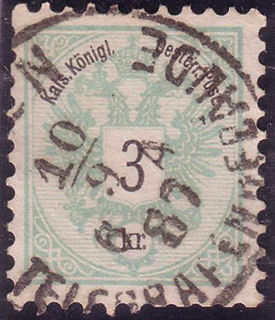 |
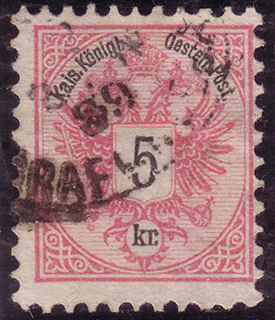 |
| Used in "Prag Altstadt" (Prague Old Town) |
Vienna Telephone Central, 1899 |
Vienna Telegraph Central, 1887 |
Vienna Telegraph Central, 1889 |
Telegraph cancel on postage stamp (1890).
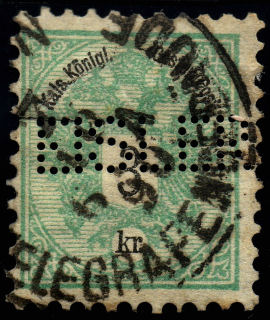
This one (courtesy of Jeff Turnbull) has a perfin of Ing. Eisler Food products, Vienna.
Telephone Cards.
According to John Barefoot, these are listed in postal stationery catalogues such as Michel.
Not having that, I will list what I know about by whatever criteria seems appropriate.
Posts & Telegraph Institution (Anstalt).
(240 dpi)
1885 Imperf. Plain white or coloured back. This is a 5 minute card for use on the line between Vienna and Brünn (Brno), Moravia (now Czech Republic).
It has an impressed postage stamp for 1fl.
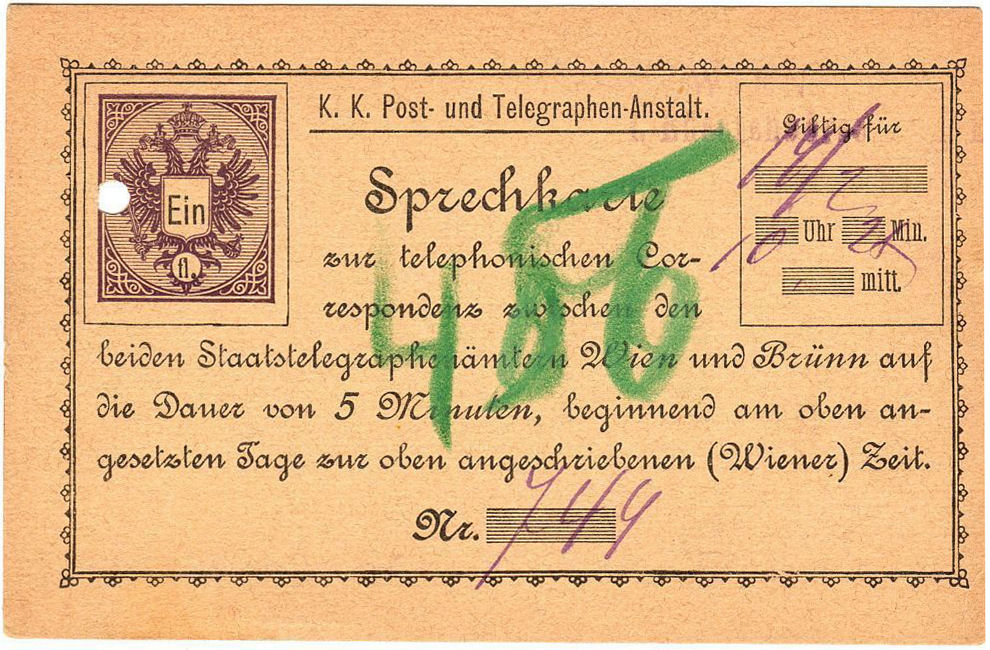
Type 1, RH1 "Sprechkarte zur telephonischen Correspondenz zwischen ..."
"A voice card for telephone correspondence between ..." - Courtesy of Dr Joe on eBay.
1886 Similar to above, but wording changed, ("Sprechen" for "Correspondenz")
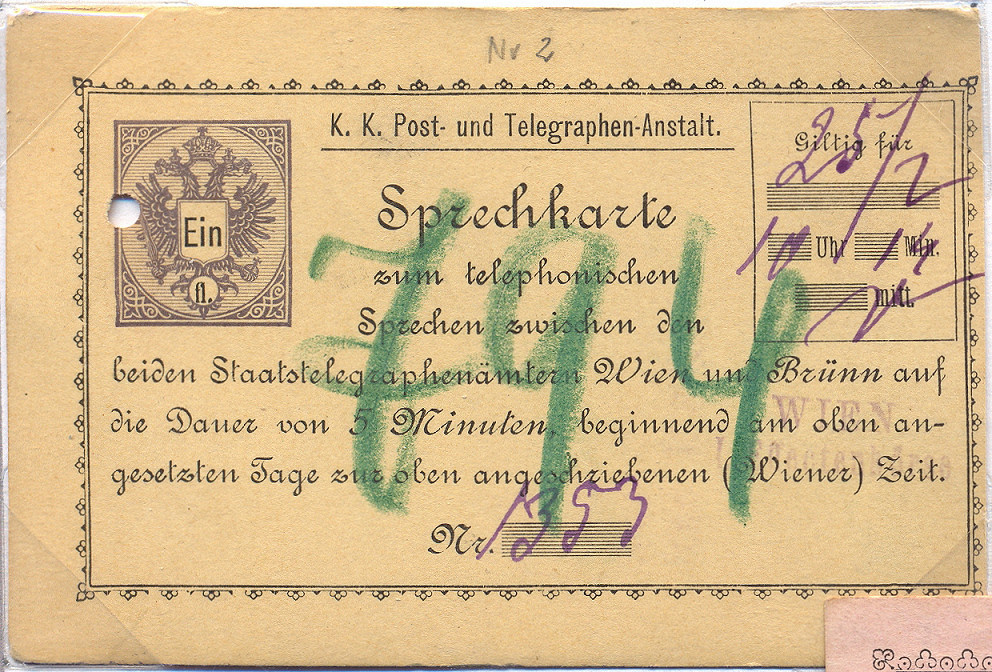
Type 2, RH2 "Sprechkarte zum telephonischen Sprechen zwischen ..." - From RL.
| RH # |
Hisc. |
Type |
Description |
Mint |
Used |
| RH1 |
- |
1 |
1fl black and purple on white |
- |
- |
| RH1a |
- |
1 |
black and purple on tan |
- |
- |
| RH2 |
- |
2 |
1fl black and purple on white |
- |
- |
Posts & Telegraph Administration (Verwaltung).
1888 Similar to above, but now just Karte - 5 Minutes on Local Line.
It has an impressed postage stamp for 20kr.
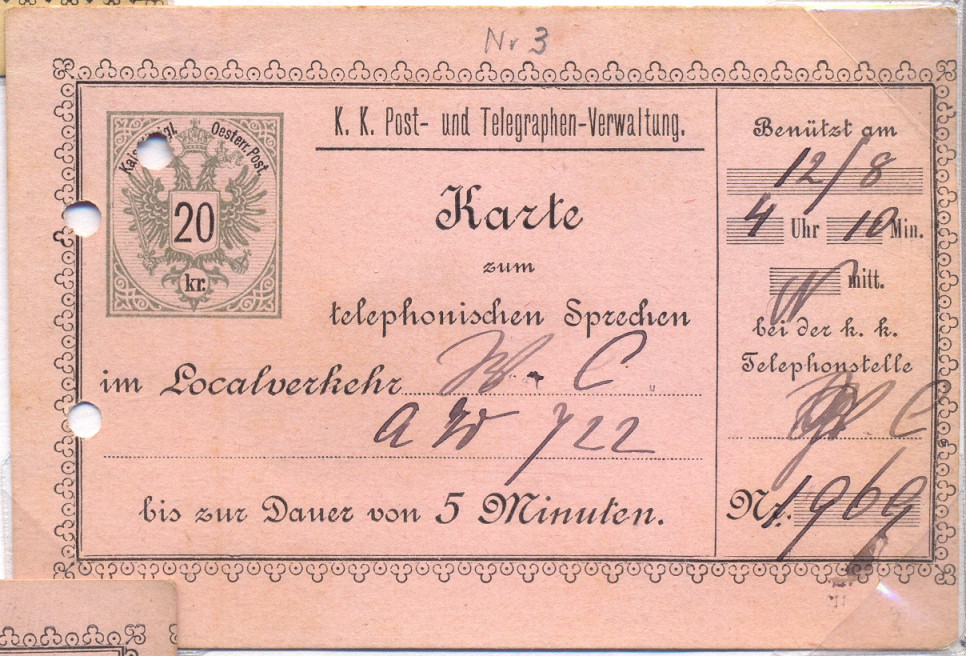
Type 3, RH3 "Karte zum telephonischen Sprechen im Localverkehr ..." - From RL.
1888 Imperf. Plain coloured backs. These are 5 minute 'interurbanen' (interurban) line (between Vienna and Budapest) cards.
According to Wikipedia this line was "completed by 1890, with all major cities being connected during the next three years".
They have an impressed postage stamp for 20kr to 50kr.
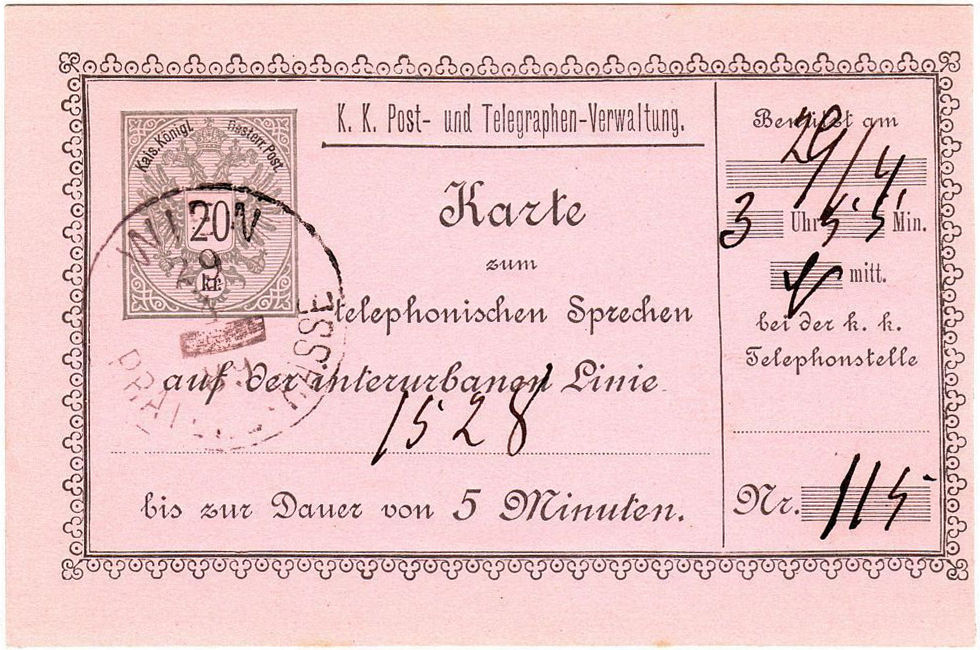
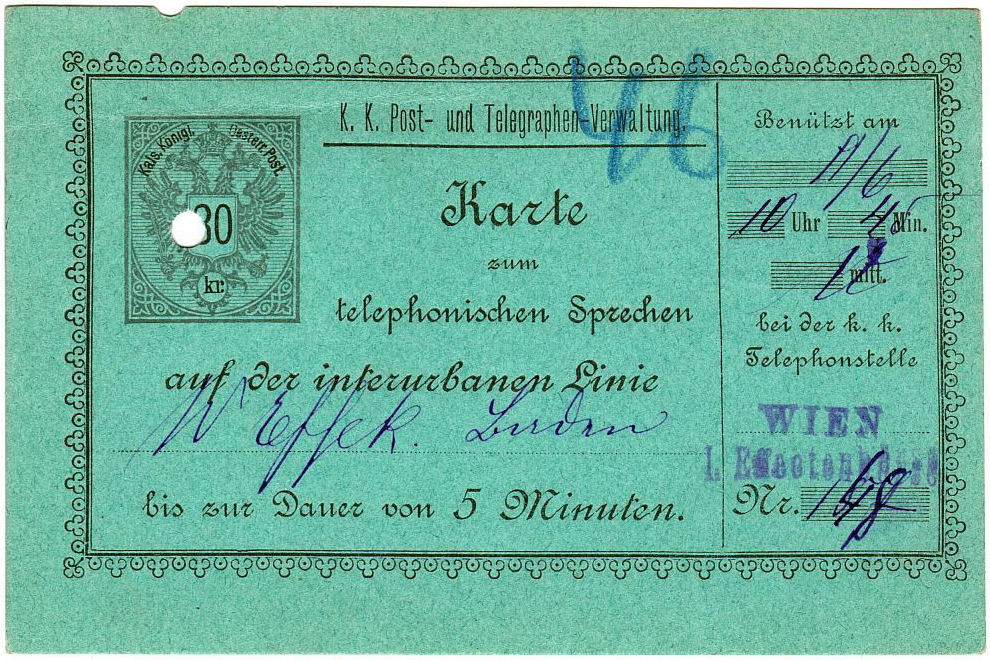
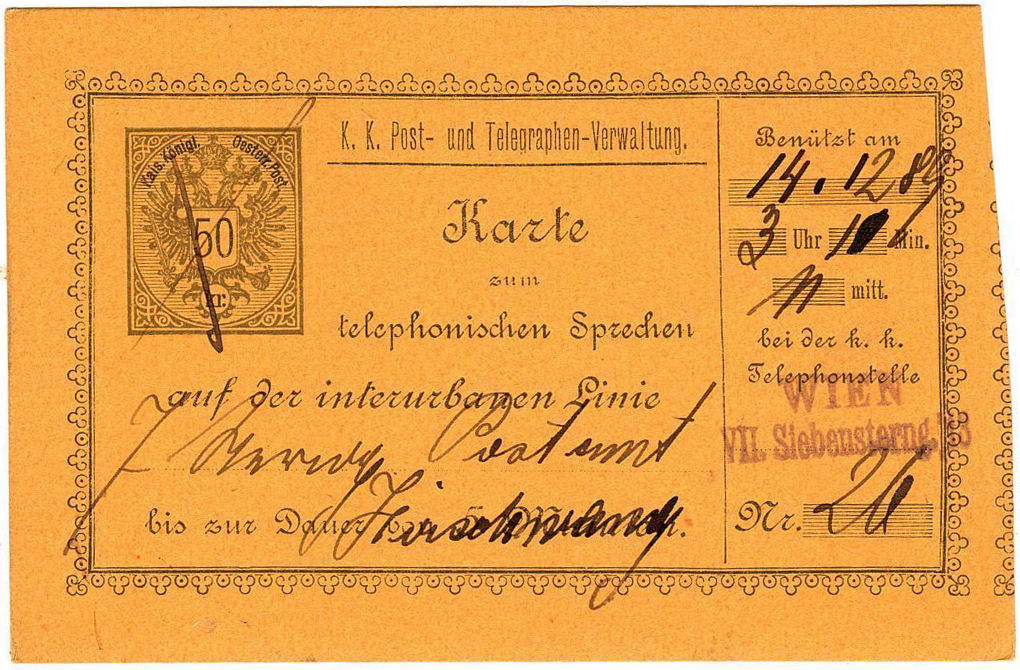
Type 4, RH4, 5 & 6 - Courtesy of Dr Joe on eBay.
This shows three different ways that these were cancelled
The first is dated 29/1/89, the last looks like 14/12/89.
I'm puzzled why these have different values if they are all for 5 minutes on the inter-urban line and all used about the same time.
They were also all used in Vienna. Presumably the rate was determined by the distance on the line.
The image below shows a receipt which is cut off in use:
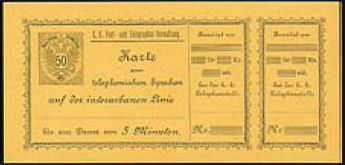
Image courtesy of Spink and Son.
| RH # |
Hisc. |
Type |
Description |
Mint |
Used |
| RH3 |
- |
3 |
20 kr black and grey on pink |
- |
- |
| RH4 |
- |
4 |
20 kr black and grey on pink |
- |
- |
| RH5 |
- |
4 |
30 kr black and grey on green |
- |
- |
| RH6 |
- |
4 |
50 kr black and grey on orange |
- |
- |
1890 ? Imperf. This card for work on the inter-urban line. (I am unsure of the translation of Werkehre.)
It has an impressed postage stamp for 1fl.
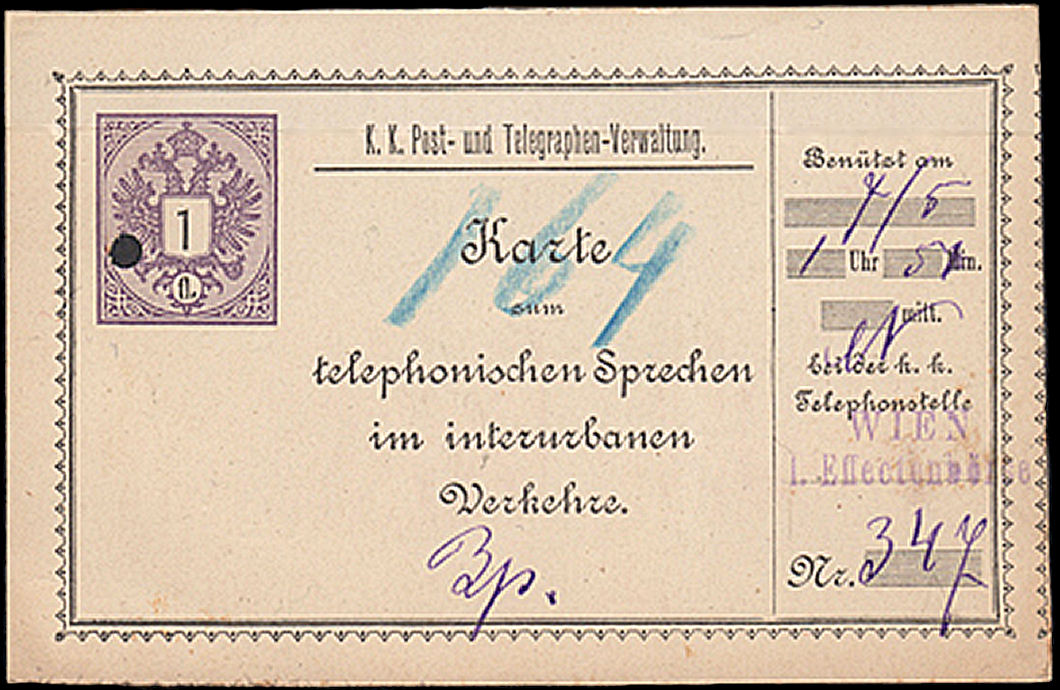
Type 5, RH7 Werkehre without time limit.
1888 Similar to above, but bi-lingual version, German and Czech.
Probably for sale in Brno (Brünn).
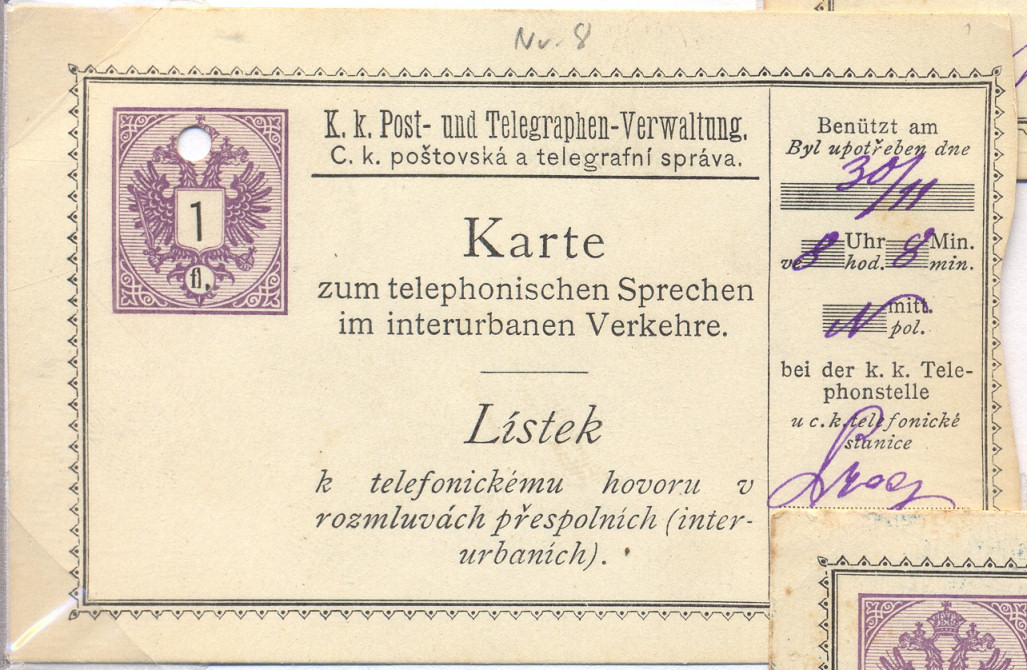
Type 6, RH8 "Karte / Lístek" - From RL.
| RH # |
Hisc. |
Type |
Description |
Mint |
Used |
| RH7 |
- |
5 |
1fl black and purple on cream |
- |
- |
| RH8 |
- |
6 |
1 fl black and violet on white |
- |
- |
1890 ? Imperf. Plain coloured back. This card for urgent work on the inter-urban line. (I am unsure of the translation of Werkehre.)
It has an impressed postage stamp for 3fl.
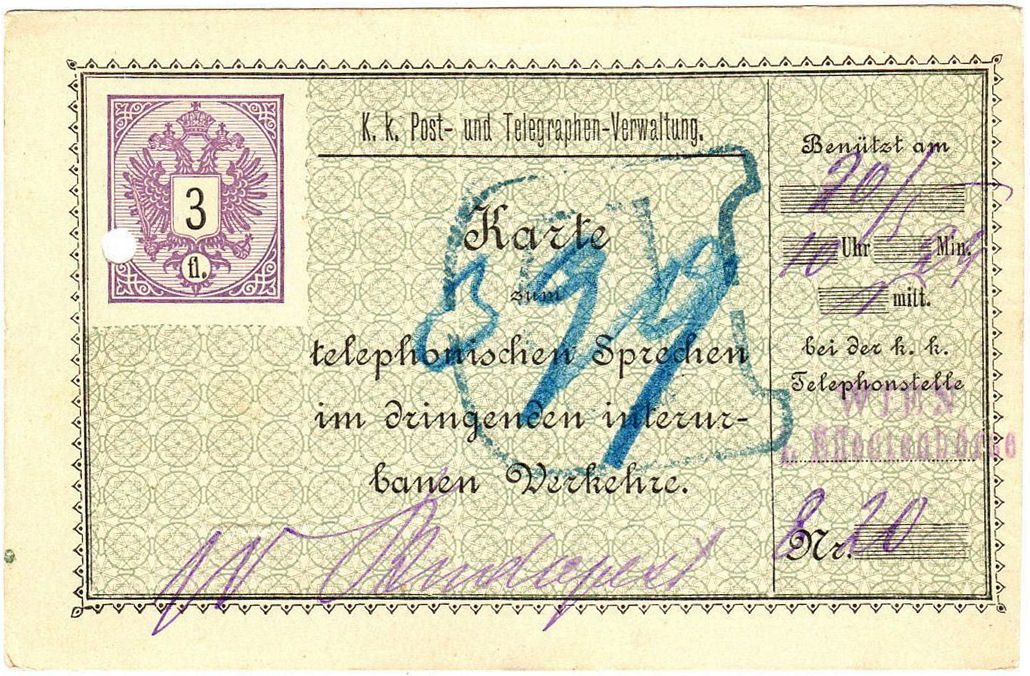
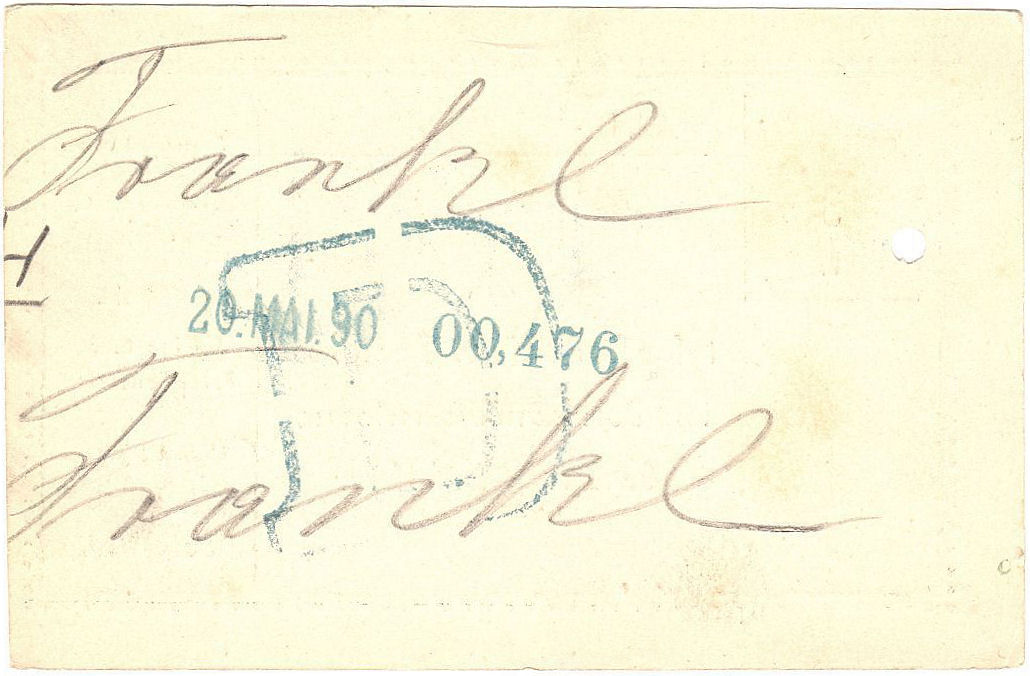
Type 7, RH9 with dated back - Courtesy of Dr Joe on eBay.
I have seen a bi-lingual version of this also, but do not have an image that I can use. I will reserve a space for this as Type 8.
| RH # |
Hisc. |
Type |
Description |
Mint |
Used |
| RH9 |
- |
7 |
3fl black, grey and purple on cream |
- |
- |
| RH10 |
- |
8 |
3fl black, grey and purple on cream |
- |
- |
From 1899 the currency became 100 heller = 1 Krone.
October 1905 New design, unfranked, no time limit - Inter-Urban Line.
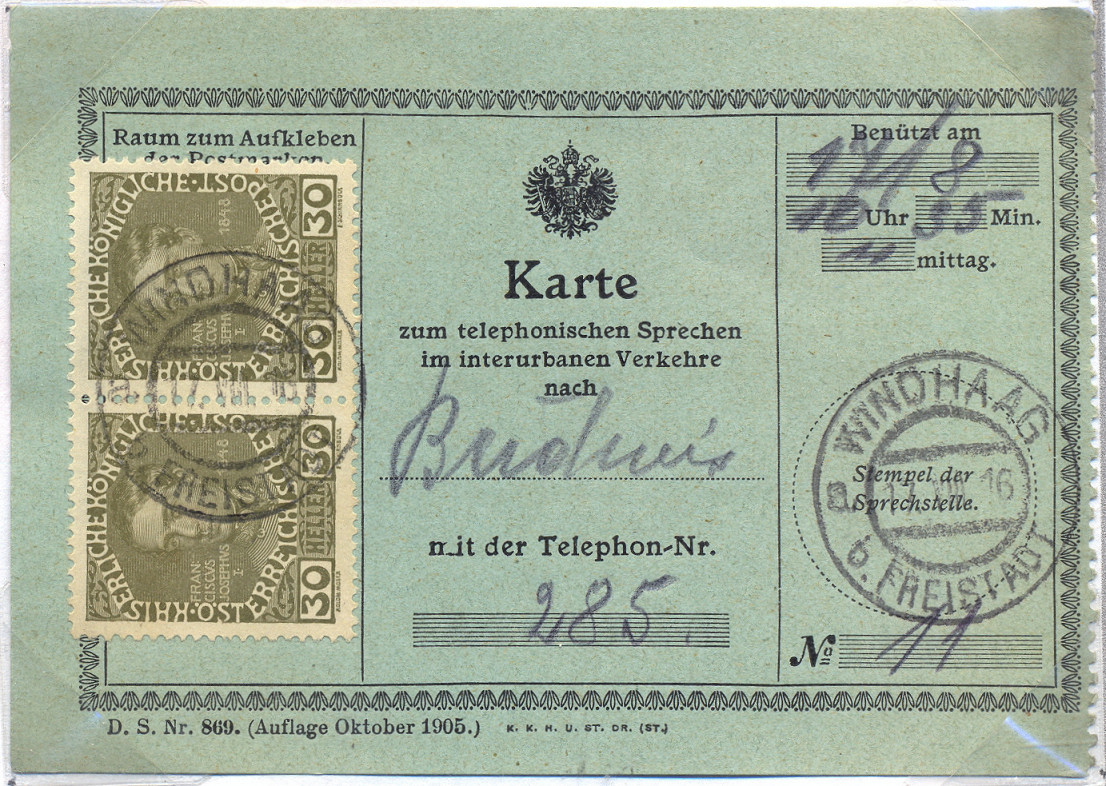
Type 9, RH11 No printed franking, can be used for any time/distance.
At the bottom it says "D. S. Nr. 869. (Auflage Oktobrt 1905.)", but this was used in 1916. - From RL.
January 1906 similar design, in German and Bohemian. unfranked, no time limit - Inter-Urban Line.
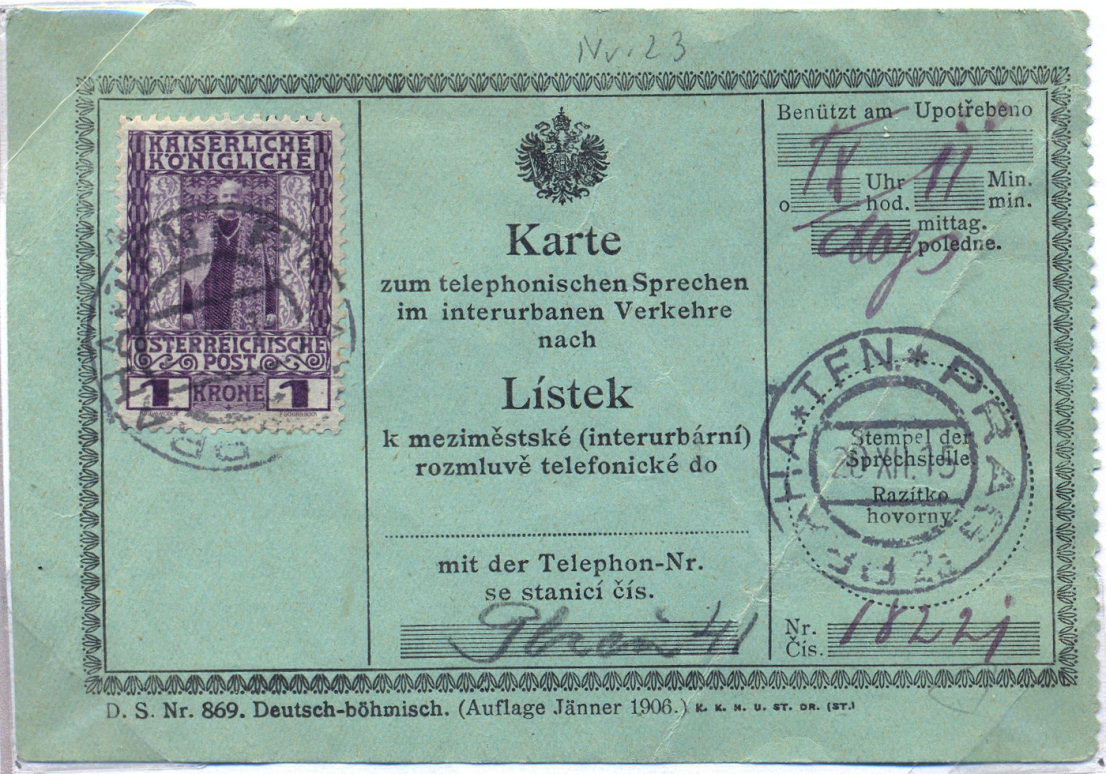
Type 9a, RH12 No printed franking, can be used for any time/distance. Used in Prague 20 December 1915.
At the bottom it says "D. S. Nr. 869. Deutsch-böhmisch. (Auflage Jänner 1906.)". - From RL.
March 1906 similar design, in German and Bohemian. unfranked, 3 minutes - Local.
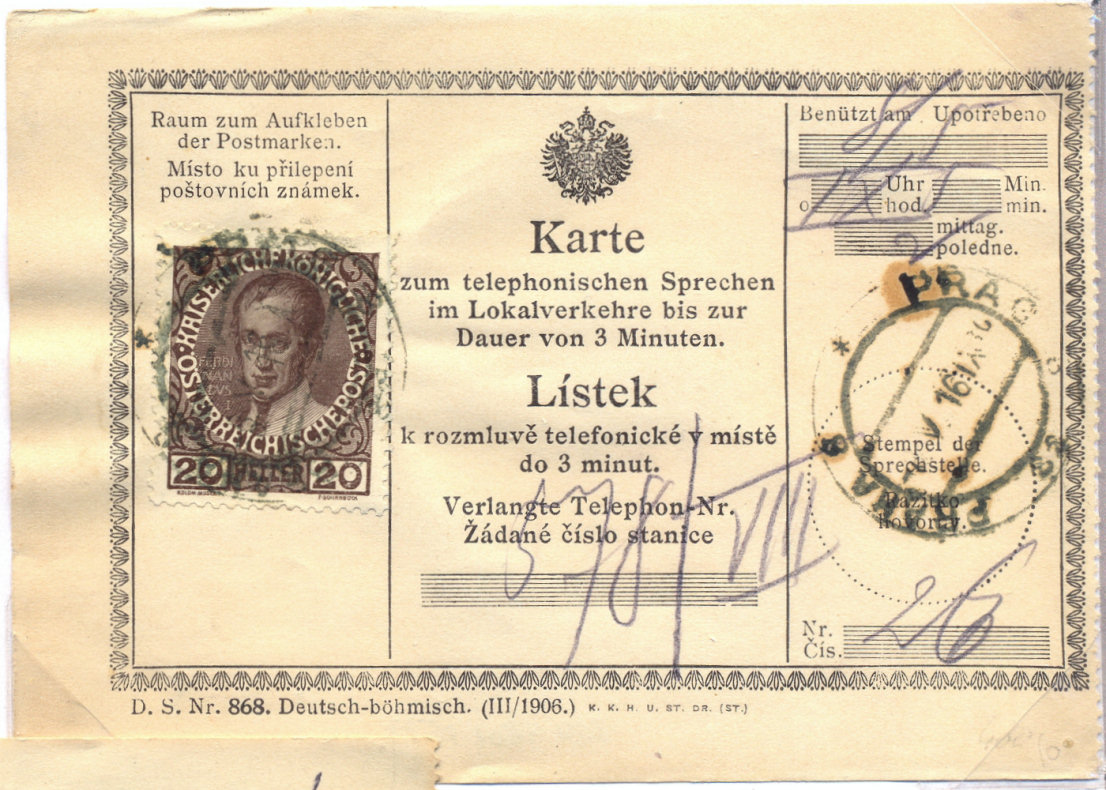
Type 9a, RH13 No printed franking, can be used for any time/distance. Used in Prague May 1916.
At the bottom it says "D. S. Nr. 869. Deutsch-böhmisch. (III/1906.)". - From RL.
1906 ? New design - 3 minutes Local Line, with impressed 20 heller stamp.
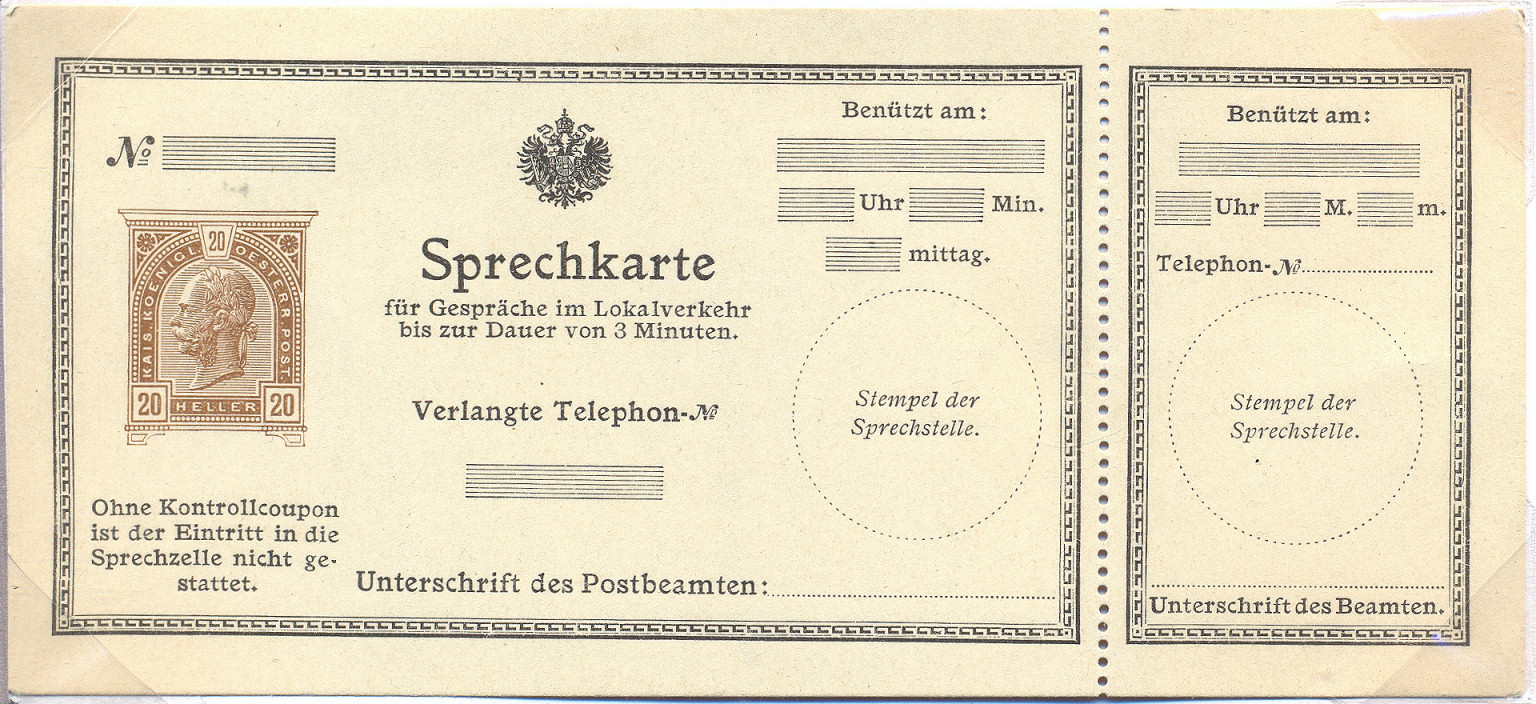
Type 10, RH14 "20h Sprechkarte Lokalverkehr " - From RL.
1908 ? New design - 3 minutes Local Line.
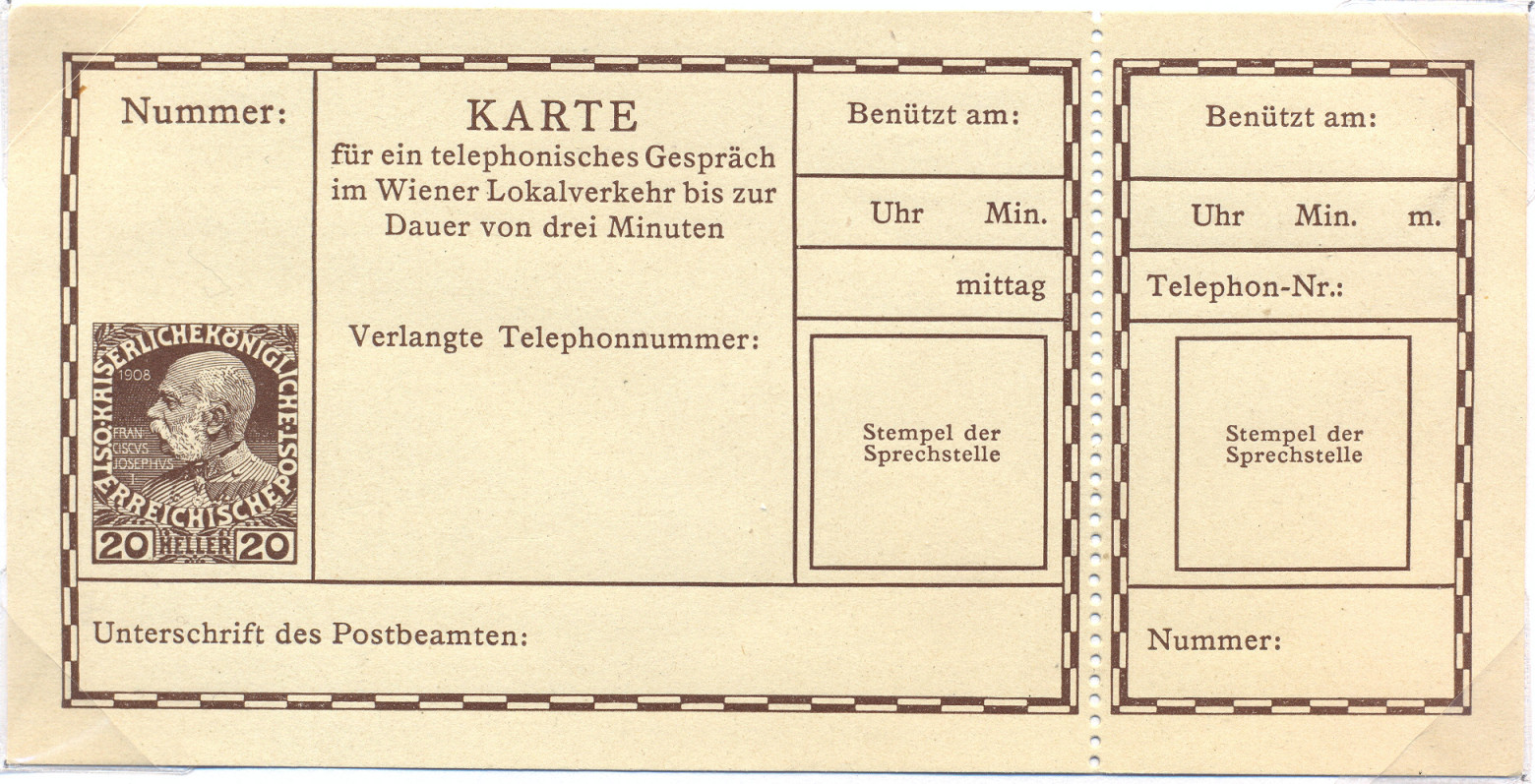
Type 11, RH15 "20h Karte Lokalverkehr " - From RL.
| RH # |
Hisc. |
Type |
Description |
Mint |
Used |
| RH11 |
- |
9 |
1905, Unfranked black on green |
- |
- |
| RH11a |
- |
9 |
black on blue |
- |
- |
| RH12 |
- |
9a |
1906, Bohem, Unfranked black on green |
- |
- |
| RH13 |
- |
9a |
1906, Bohem, Unfranked black on white |
- |
- |
| RH14 |
- |
10 |
20h black and brown on cream |
- |
- |
| RH15 |
- |
11 |
20h brown on cream |
- |
- |
Small Format.
This is a 3 minute local for Vienna
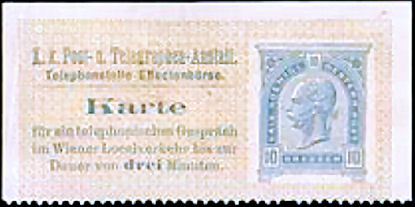
Type 12, RH16 (half size) - Courtesy of Spink and Son. John Barefoot dates this at 1894 and the one below at 1900.
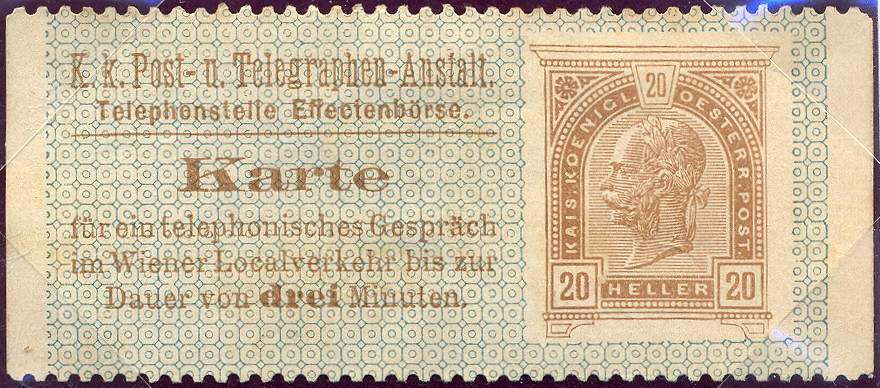
Type 12, RH17 - From RL
1908 ? New design.
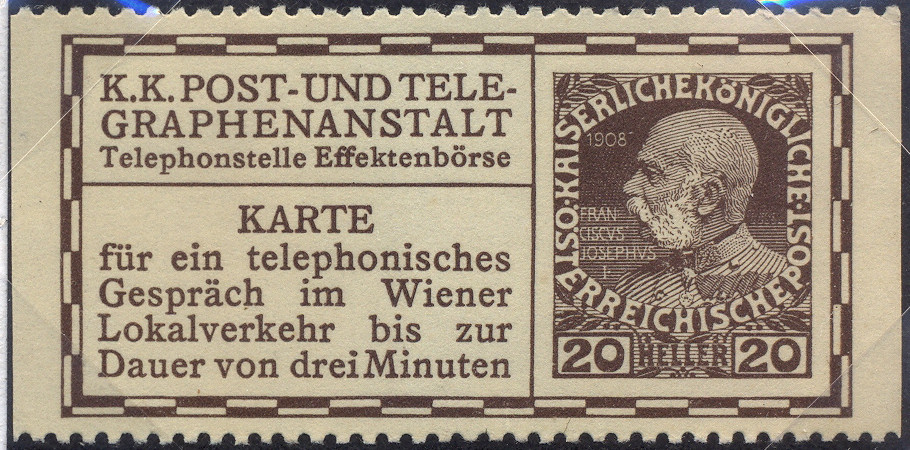
Type 13, RH18 "20h Karte Lokalverkehr " - From RL.
| RH # |
Hisc. |
Type |
Description |
Mint |
Used |
| RH16 |
- |
12 |
1894? 10 heller blue-grey and salmon / cream |
- |
- |
| RH17 |
- |
12 |
1900? 20 heller green and gold / cream |
- |
- |
| RH18 |
- |
13 |
1908 20 heller brown |
- |
- |
3. Railway.
Issued around 1900 by the K. K. St. B. State Railway.
Thin hard Pelure ('onionskin') paper. No watermark. Perf. 12½.
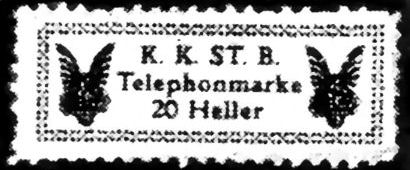
Type 14, RH17 - Taken from page 12 of Hiscocks' book.
| RH # |
Hisc. |
Type |
Description |
Mint |
Used |
| RH19 |
H1 |
14 |
20 heller black / yellow |
- |
- |
Hiscocks added the following note:
Note.
This stamp, which was brought to my attention during the last stages of the preparation of this book, was apparently issued around 1900 by the
K. K. St. B. ('Kaiser Königlich Stadts Bahnen' or 'Royal Imperial State Railway'?). Other values and issues may exist. |
Telegraph Forms.
A Receiving form of 22 October 1866 used at Sebenico (now Šibenik on the coast of Croatia). I cannot make out where it was from. Size 265 x 195 mm.
This is surprisingly, written in Italian.
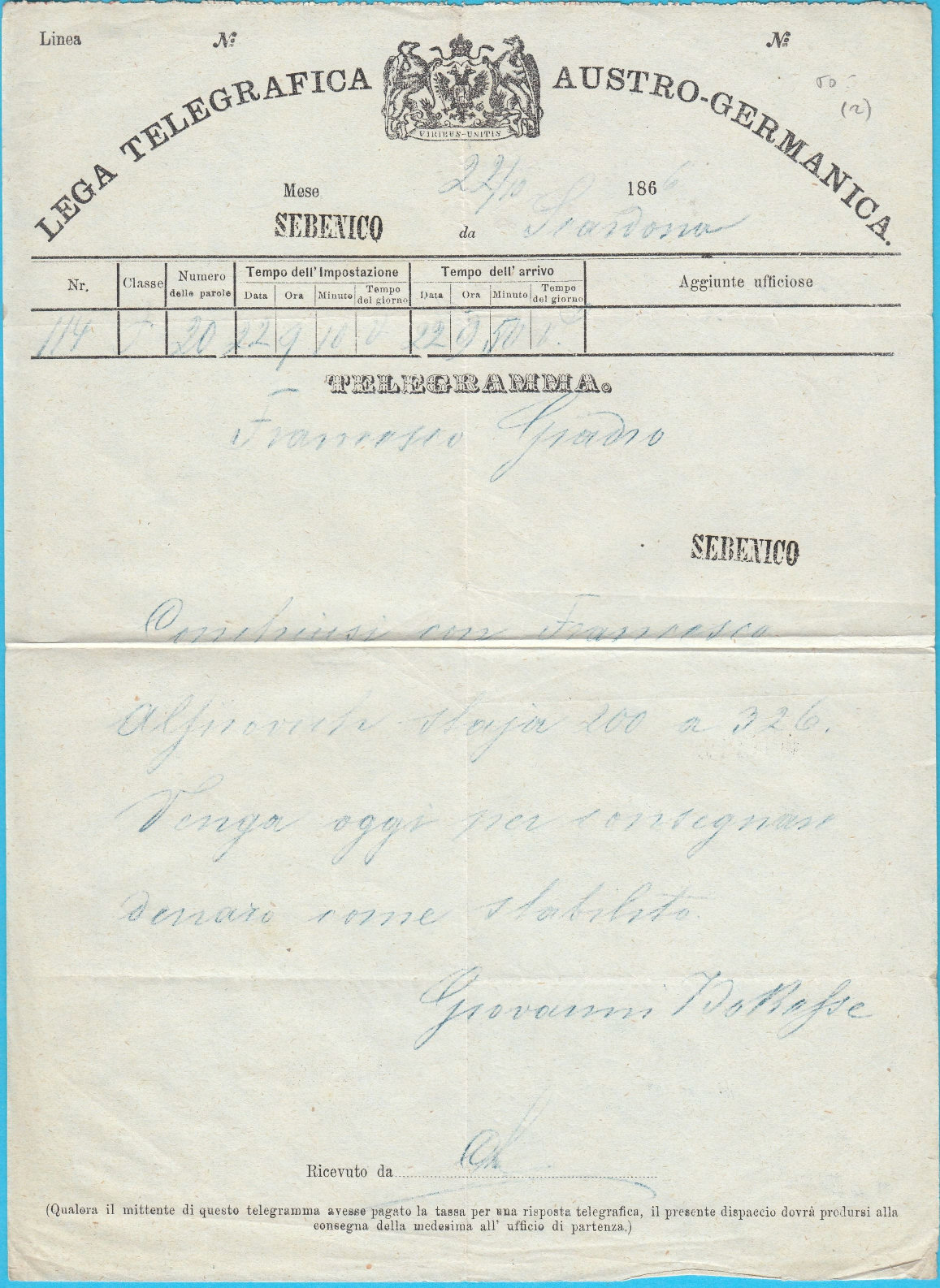
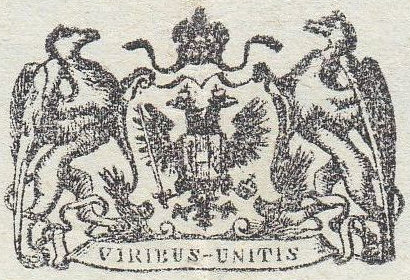 |
|
The motto "VIRIBUS UNITIS", (United Forces) was the
motto of the Emperor Franz Joseph and in 1908 became
the name of their first dreadnought battleship which later
was sunk in 1918 by the exploits of two Italian Officers
Images courtesy of molo10000 on eBay. Click image for listing.
If anyone is interested, I can put you in touch with the seller directly.
You might be able to negotiate on the price.
|
A Receiving form of April 1873 used at Leitmeritz (North Bohemia) for a telegram from Prague.
This is Bilingual in German and Czech.
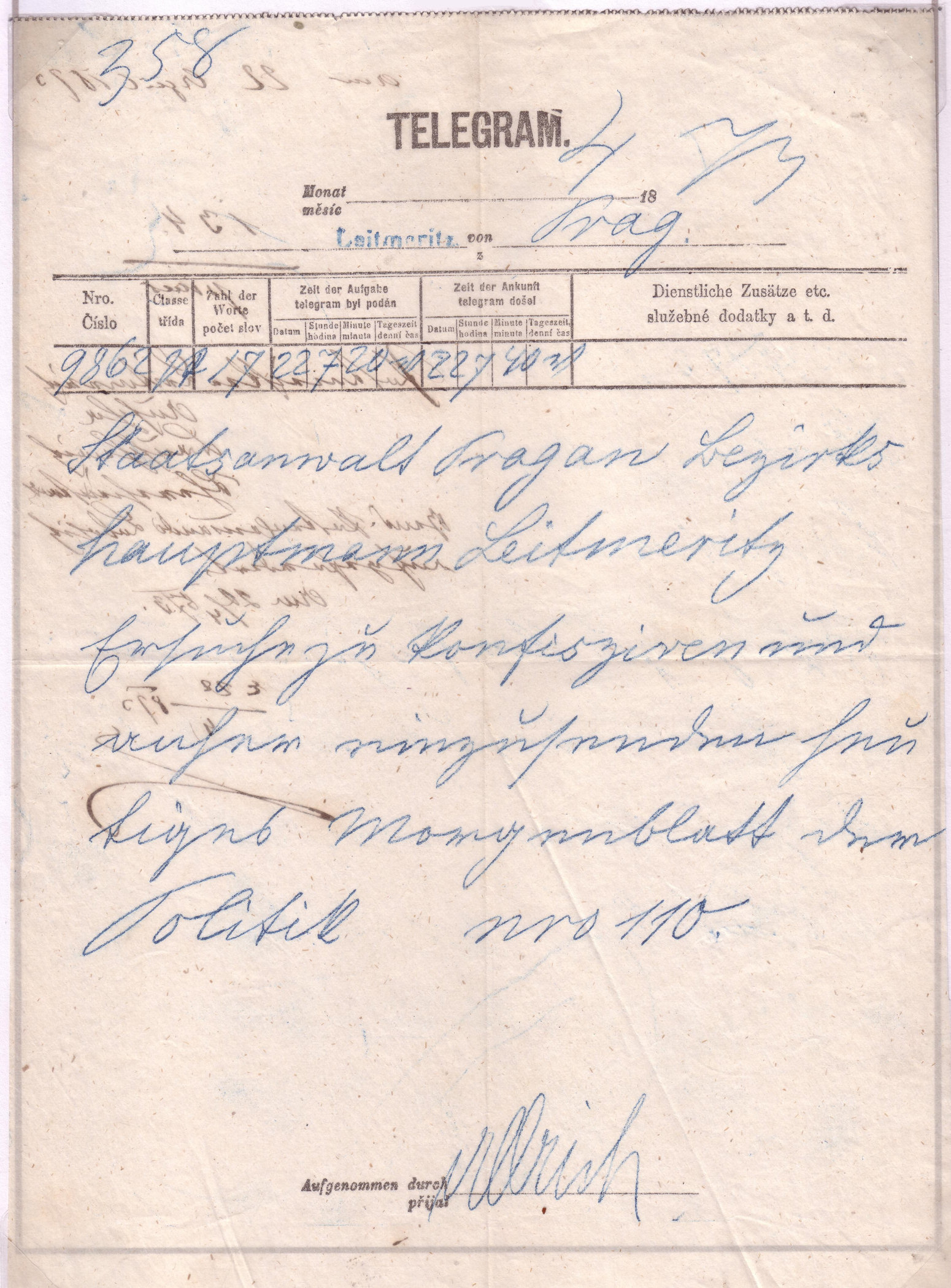
Image courtesy of Rolf Lamprecht.
A form of around 1874 with an impressed 50kr stamp.
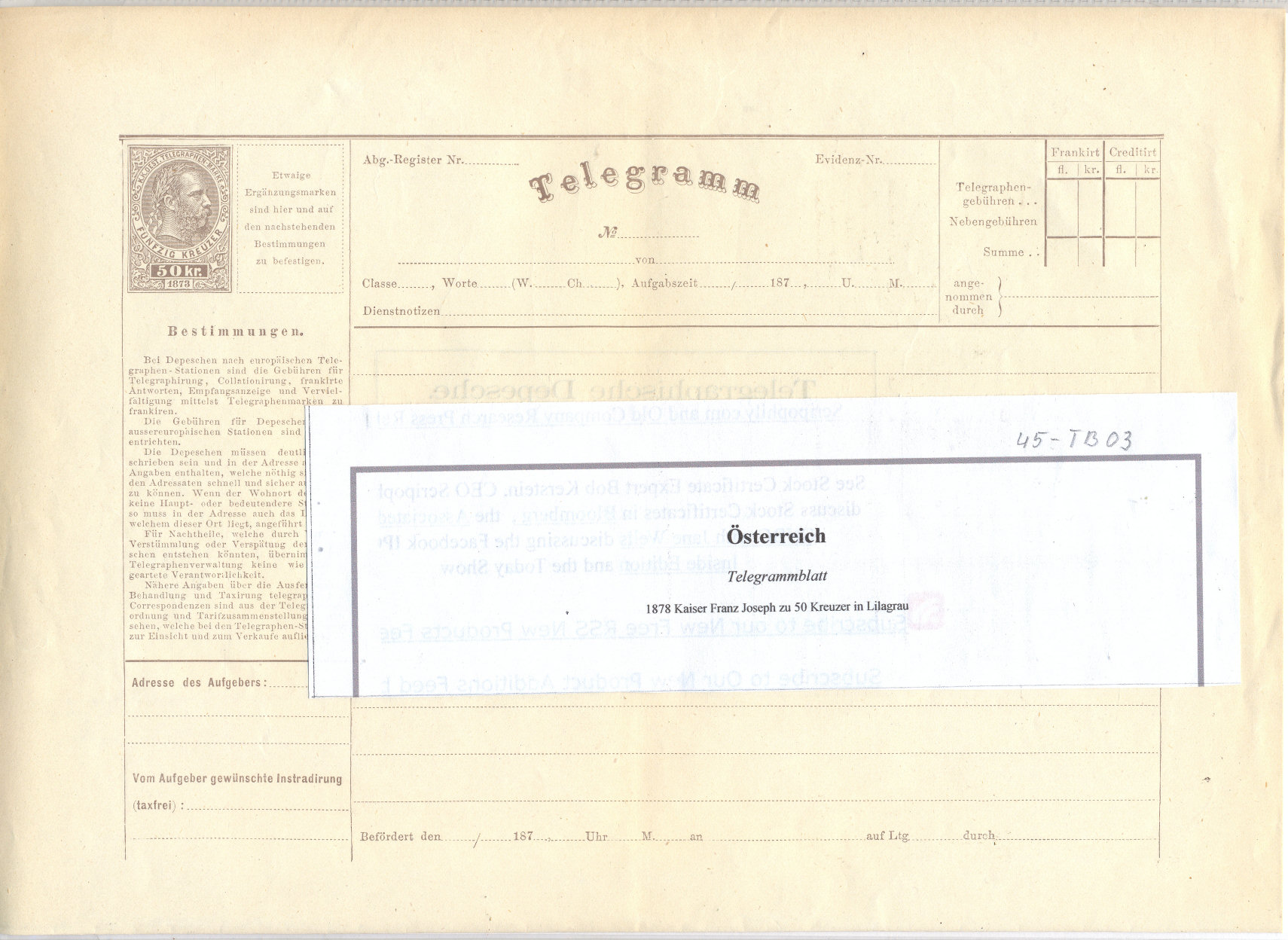
Image courtesy of Rolf Lamprecht.
A form of around 1900 with an impressed 5 heller stamp.
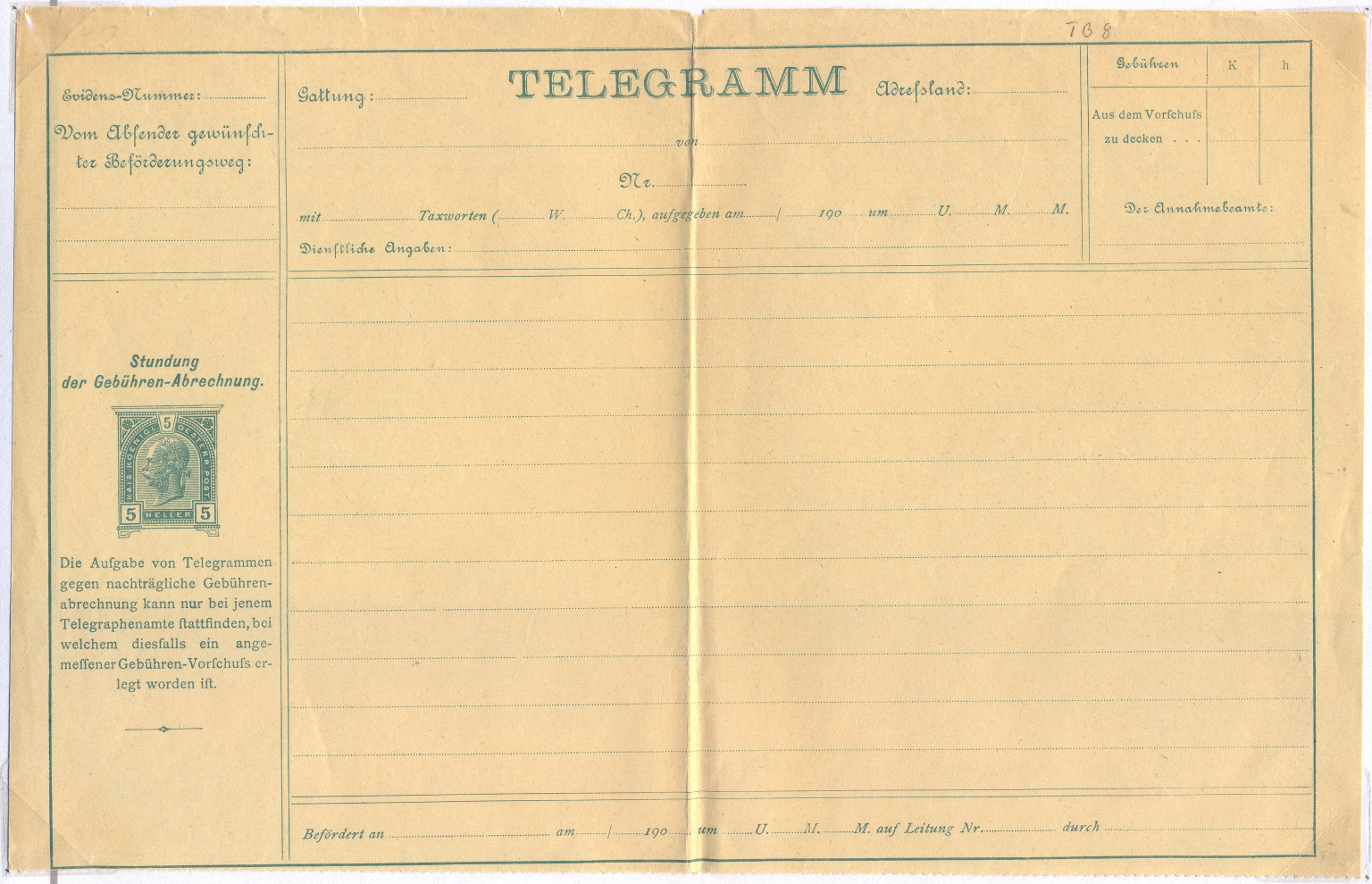
Image courtesy of Rolf Lamprecht.
A form of around 1908 with a different impressed 5 heller stamp.
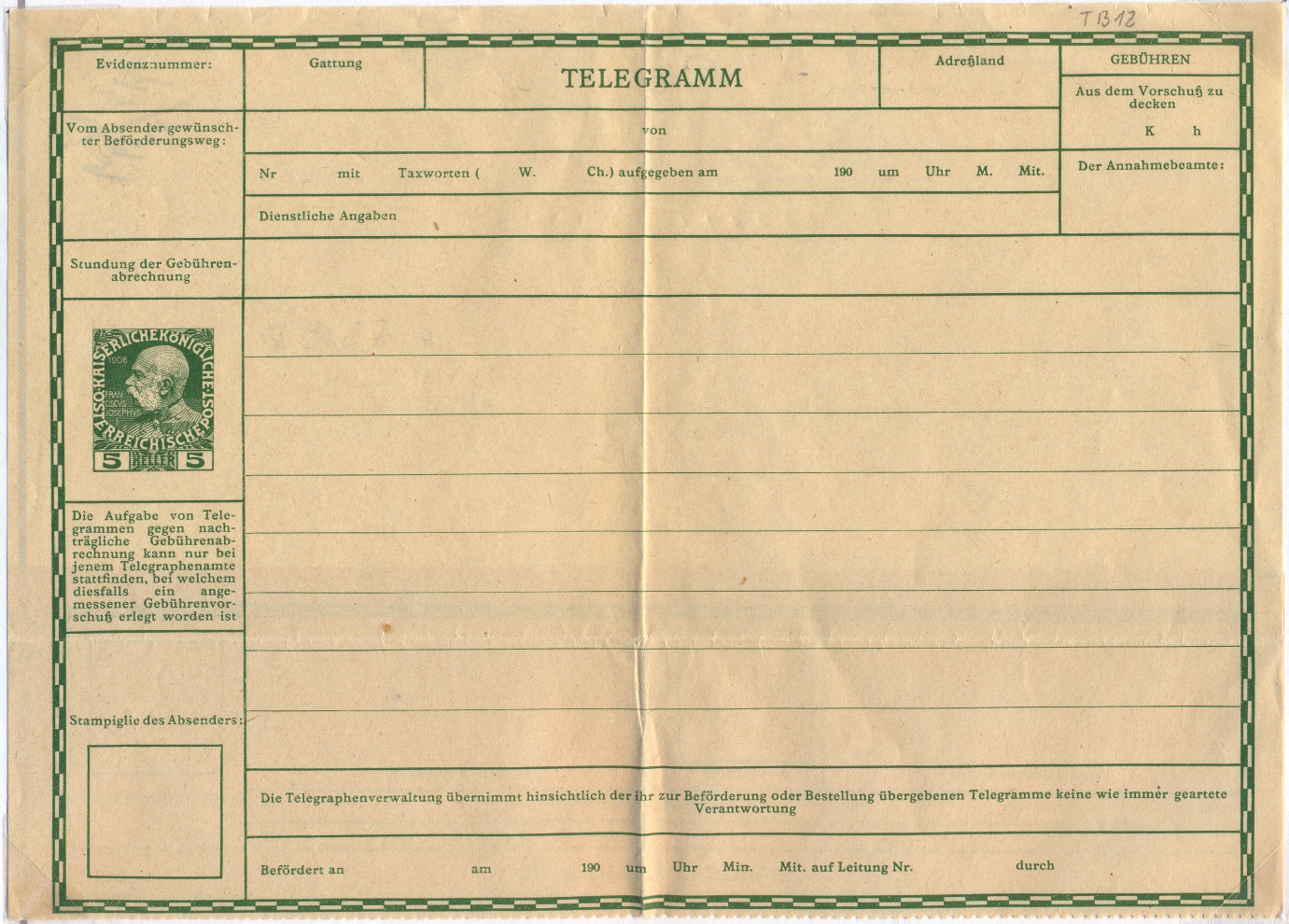
Image courtesy of Rolf Lamprecht.
A form of around 1909 without an impressed stamp.
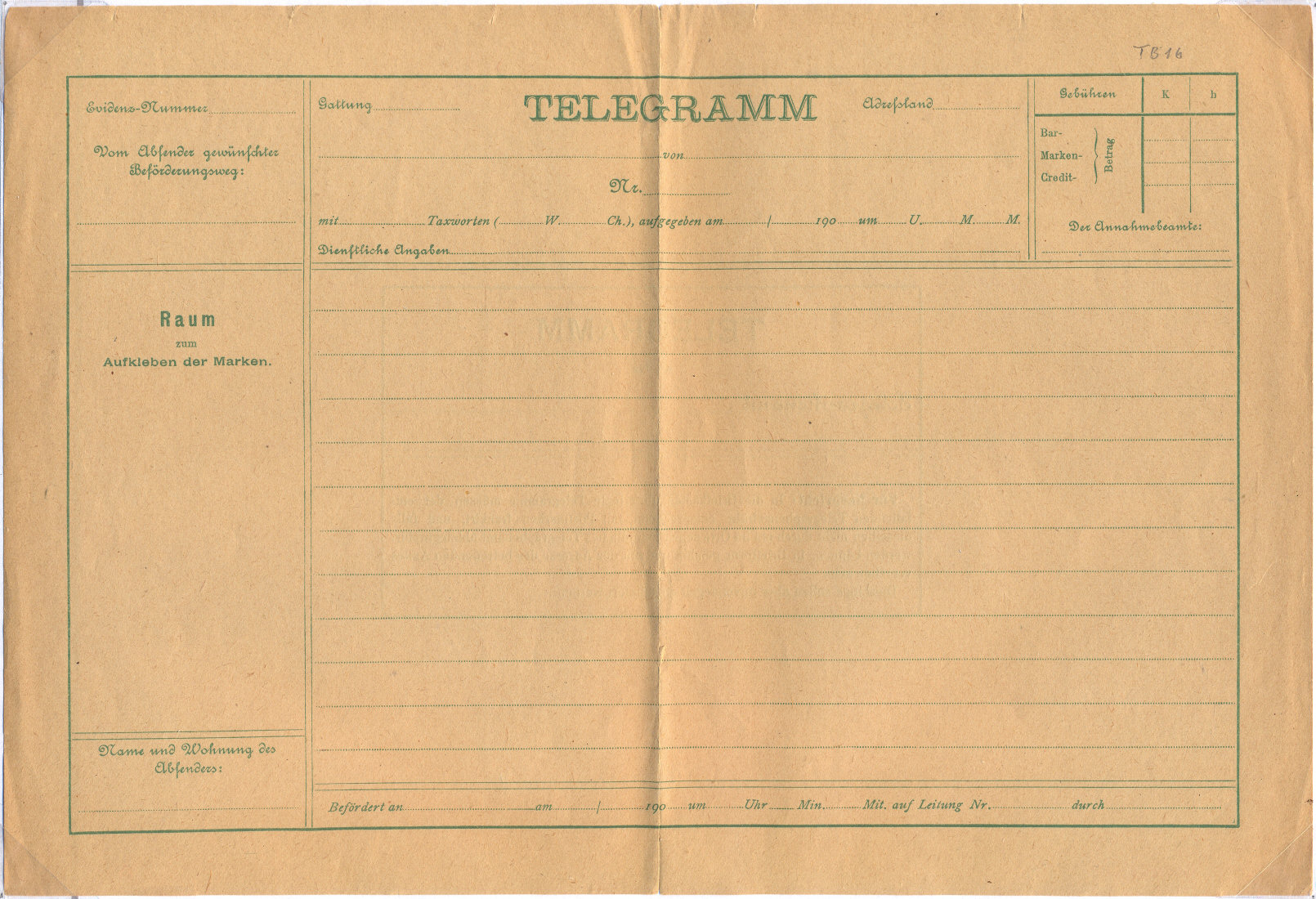
Image courtesy of Rolf Lamprecht.
Telegraph Advice Form.
A form of around 1876 with an impressed 30kr stamp and space for more.
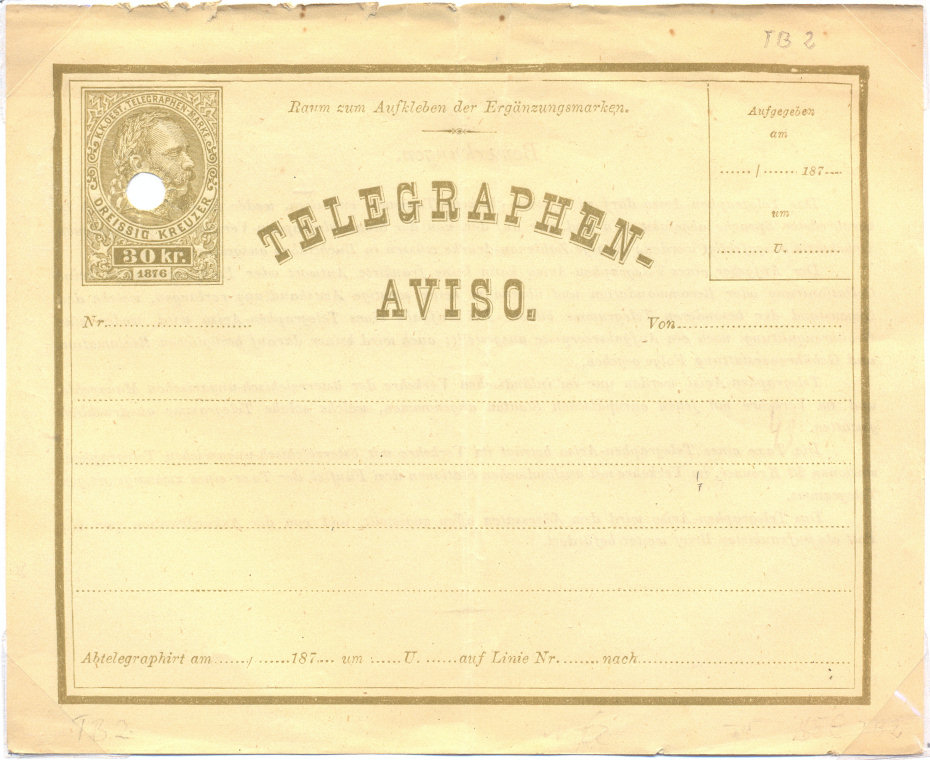
This presumably tells you what happened to a Telegram. Image courtesy of Rolf Lamprecht.
Miscellaneous.
Rohrpost, apneumatic dispatch system
Like in Paris, though not actually sent by telegraph, these were clearly administered by the Telegraph department.
It is likely that the Pneumatic system was used to expedite delivery of telegrams.
It also seems though that at least some Pneumatic Stations also served as Telegraph Stations, sending telegrams.
The system in Vienna began operations on March 19th 1875, initially with only 10 offices (within the central region.
The compressors and air storage tanks were in the Laurenzer building at the "Fleischmarkt" (Meat Market).
"Aufgabs - Recepisse" / "Ricevuta di Consegna" Cards.
(Delivery Receipt Cards)
The earliest type of 1873 has an impressed stamp of the H7 type. This was used 30 December 1874.
Apart from cards just in German, dual language cards were also available, adding Bohemian, Polish or Italian.
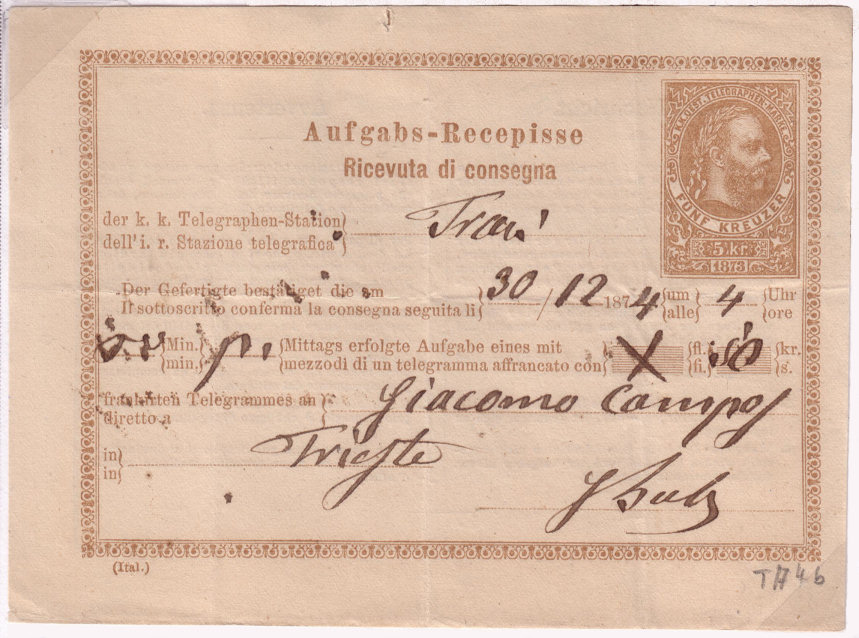
This is marked at the bottom with "(Ital.)" indicating Italian. Image courtesy of Rolf Lamprecht.
This half sized image (of front and back) shows an item from 1879 (available from 1876) has an impressed H6 type stamp.
They were also available in the same three dual language versions.
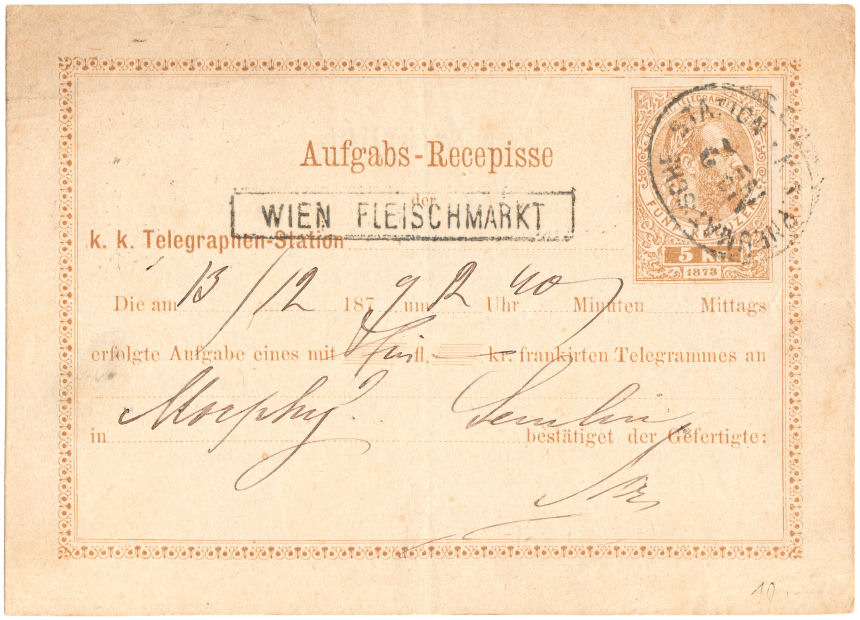
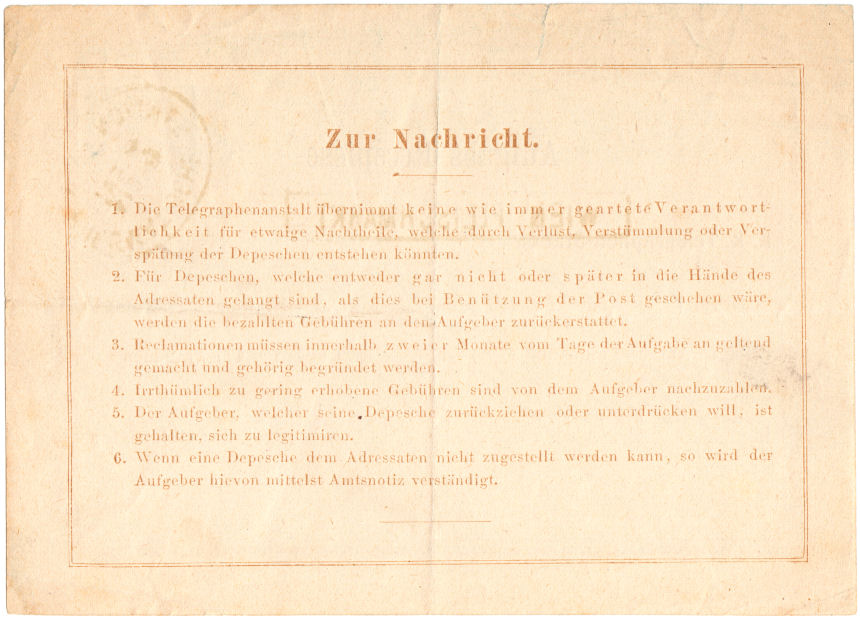
A 5kr printed stamp with a Pneumatic Station cancel from Vienna meat market.
Conditions of use are printed on the back, which read :
| Zur Nachricht. |
1. Die Telegraphenanstalt übernimmt keine wie immer geartete Verantwortliehkeit für etwaige Nachtheile, welche durch Verlust.
Verstümmlung oder Verspätung der Depeschen entstelien Könnten.
2. Für Depeschen, welche entweder gar nicht oder später in die Hände des Adressaten gelangt sind, als dies bei Benützung der Post
geschehen wäre, werden die bezahlten Gebühren an den Aufgeber zurückerstattet.
3. Reclamationen müssen innerhalb zweier Monate vom Tage der Aufgabe an geltend gemacht und gehörig begründet werden.
4. Irrthümlich zu gering erhobene Gebühren sind von dem Aufgeber nachzuzahlen.
5. Der Aufgeber, welcher seine Depesche zurückzichen oder unterdrücken will, ist gehalten, sich zu legitimiren.
6. Wenn eine Depesche dem Adressaten nicht zugestellt werden kann, so wird der Aufgeber hievon mittelst Amtsnotiz verständigt. |
Translating as :
|
| For message. |
1. The Telegraph Station does not assume any kind of responsibility for any disadvantages caused by loss.
Mutilation or delay of the dispatches could arise.
2. For dispatches which either did not get into the hands of the addressee at all or later than when using the post office,
if this has happened, the fees paid will be refunded to the issuer.
3. Reclamations must be asserted and duly justified within two months from the date of the assignment.
4. Fees that are erroneously charged too low must be paid by the client.
5. The sender, who wants to withdraw or suppress his message, is obliged to legitimize himself.
6. If a dispatch cannot be delivered to the addressee, the sender shall be notified of this by means of an official note. |
"Aufgabeschein".
1879. This has no impressed stamps, just "5 Kr." in the corners.
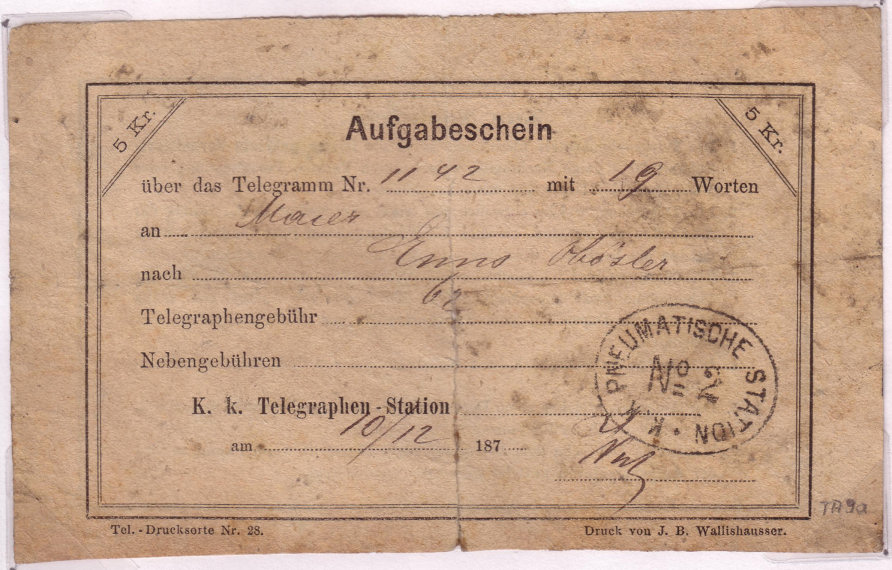
This is marked at the bottom with "Tel. - Drucksorte Nr. 28." at bottom-left and "Druck von J. B. Wallishausser." at the bottom-right.
Image courtesy of Rolf Lamprecht.
This 1880 type has an unusual impressed stamp.
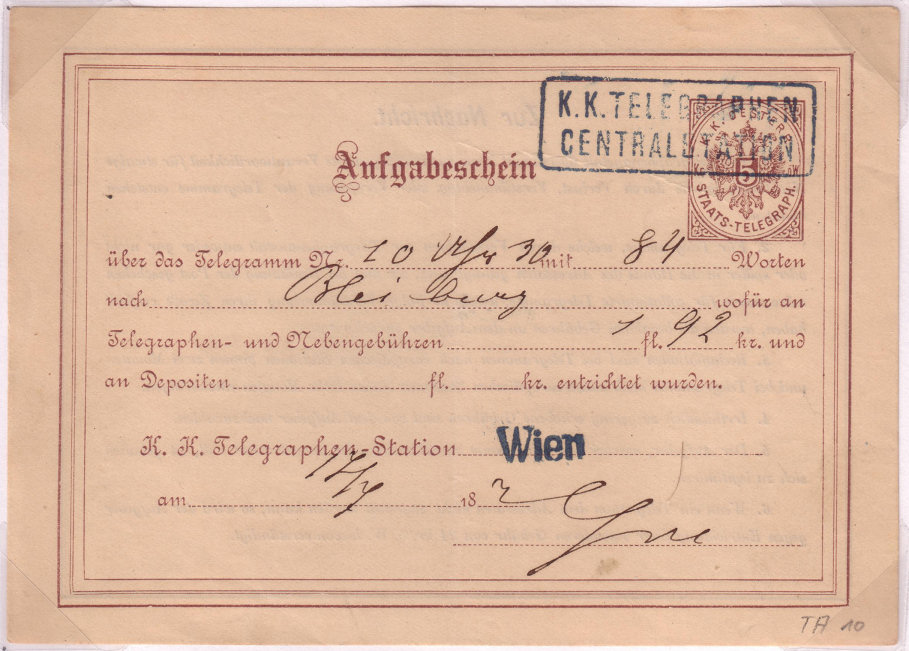 |
|
This does not correspond to any issued adhesive telegraph stamps.
It is also inscribed "STAATS - TELEGRAPH."
The kaiser königlichen Staats-Telegraph was created
January 16, 1847 by a decree of the Privy Council, but the
"Staats" part was generally left out.
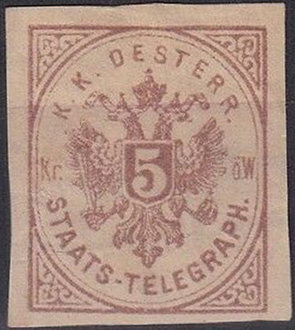
The face value was the usual 5Kr. |
Similar to above, but apparently in black on white. Same type stamp, used 18 September 1883..
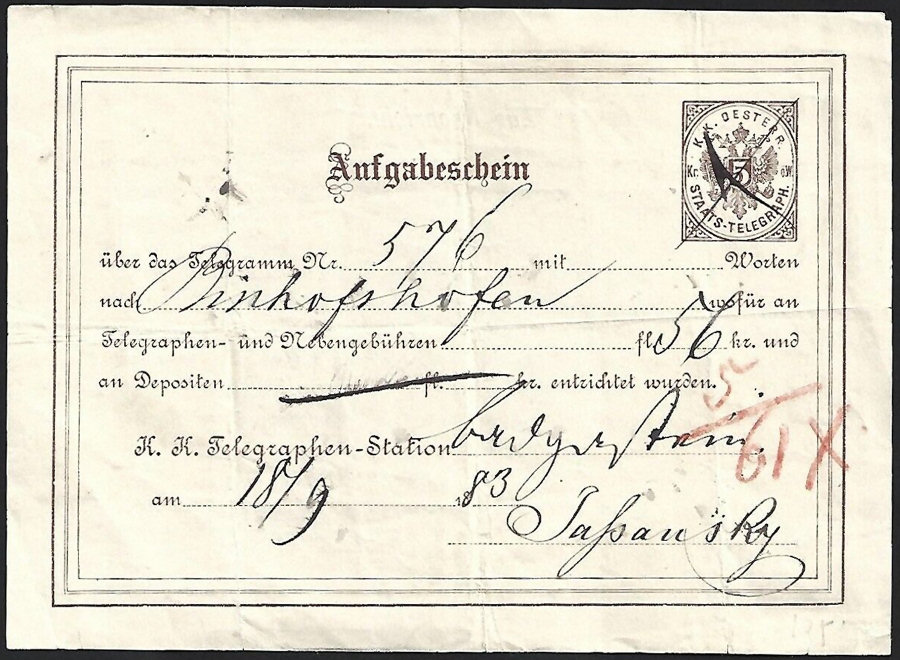 |
|
The back has terms, conditions and instructions for use.
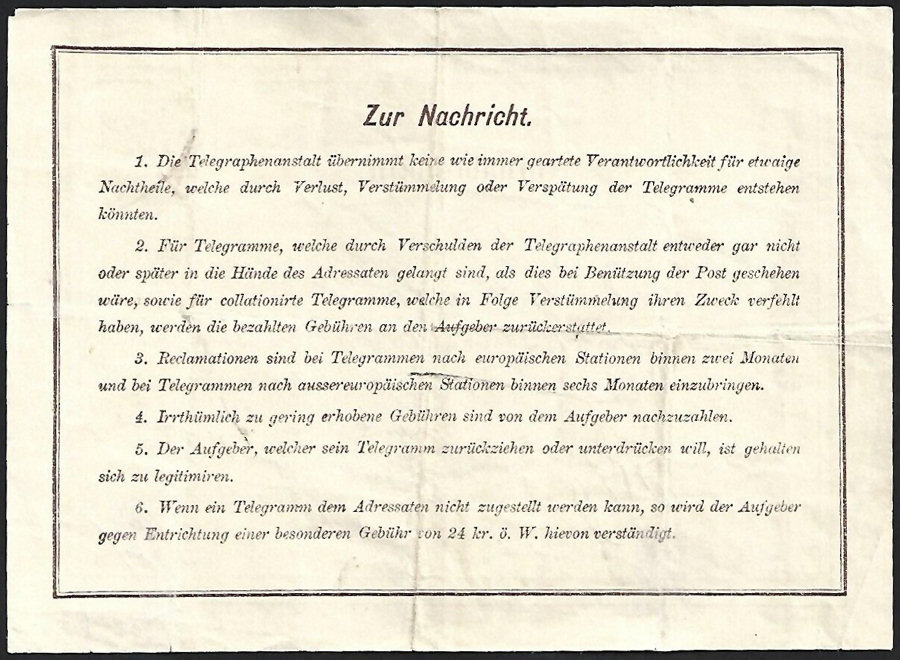 |
Images courtesy of AlphaOmegaPhilately on eBay. (Click on image for listing).
This 1884. version is the same as the last, except a change of the impressed stamp to a postal design.
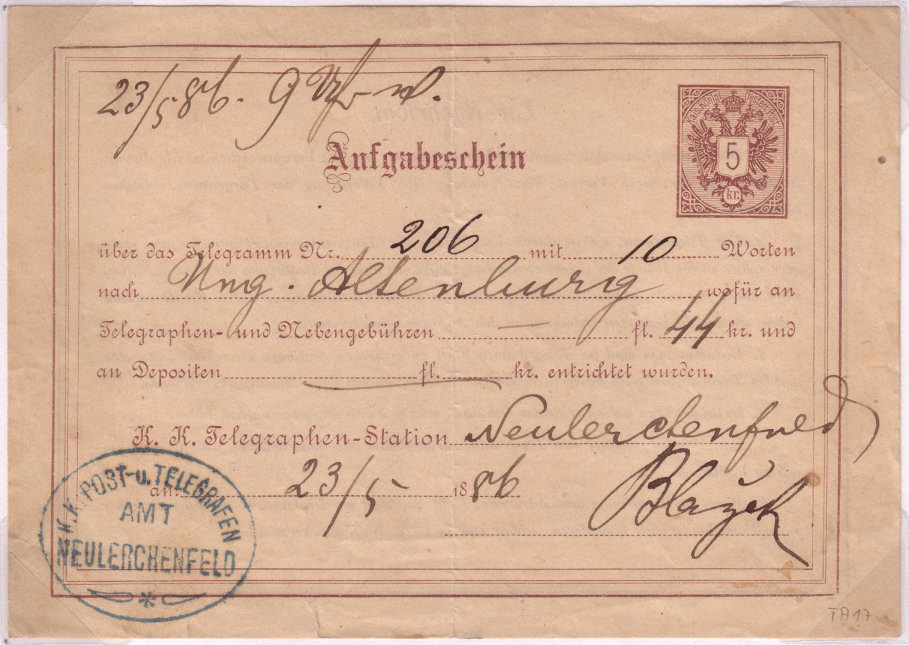
Used at Neulerchenfeld, a little west of Vienna. Image courtesy of Rolf Lamprecht.
This 1890. a change of the impressed stamp.
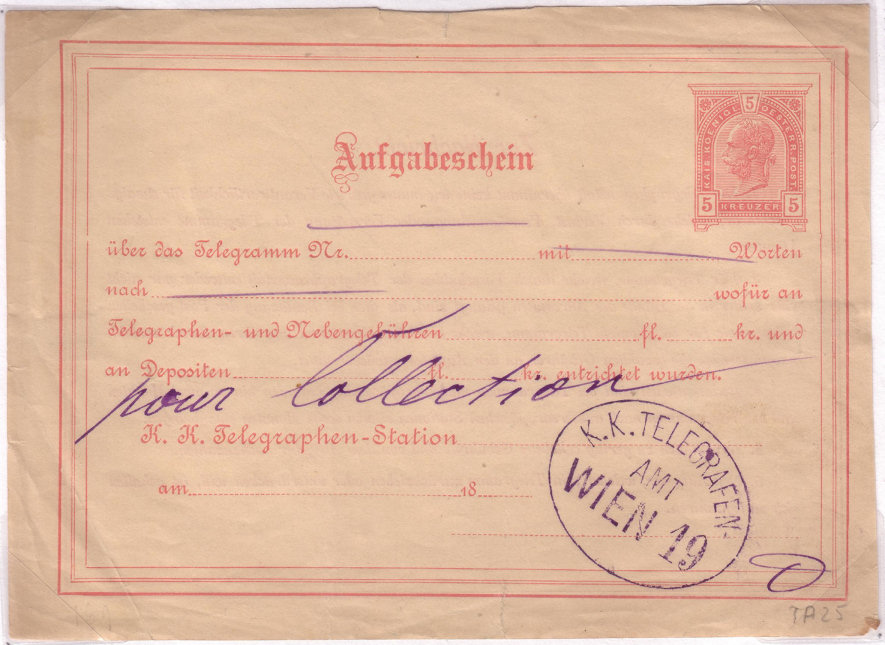
Image courtesy of Rolf Lamprecht.
This 1892. dual language versions.
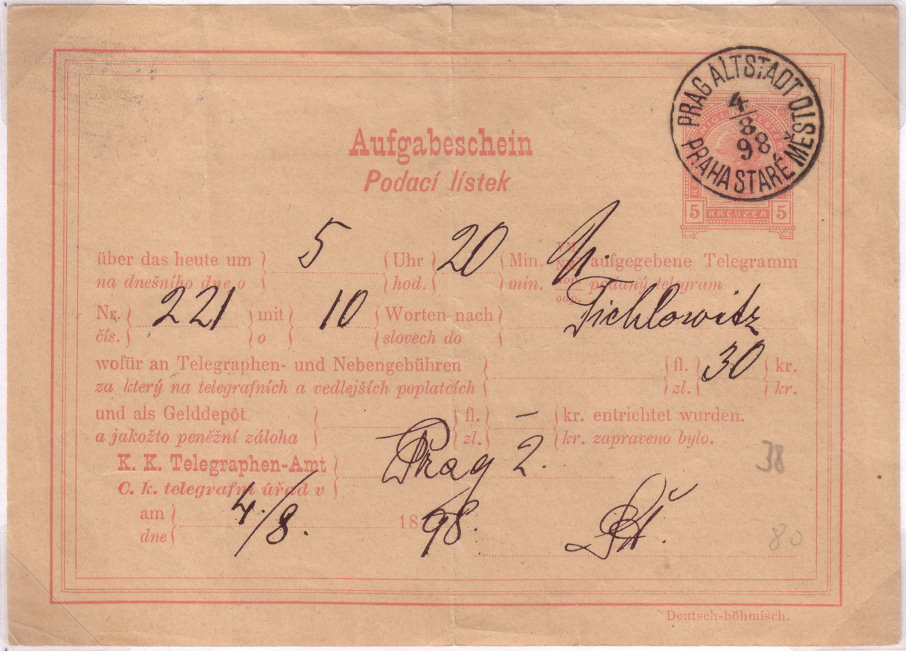
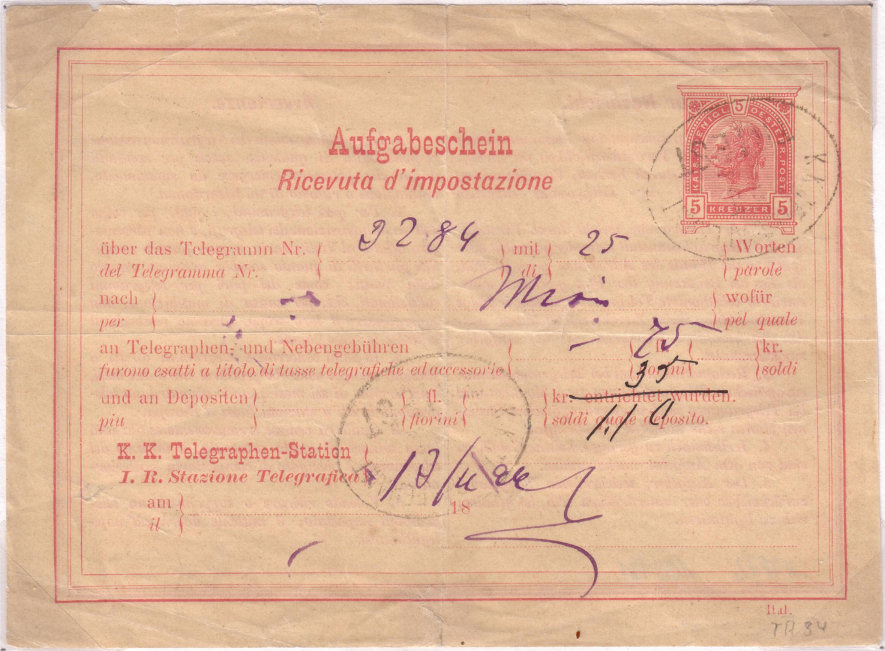
Bohemian (used in Prague) on the left and Italian (used in Triest) on the right, as inscribed on them at bottom-right. Images courtesy of Rolf Lamprecht.
This 1894. a change of the wording from 1890.
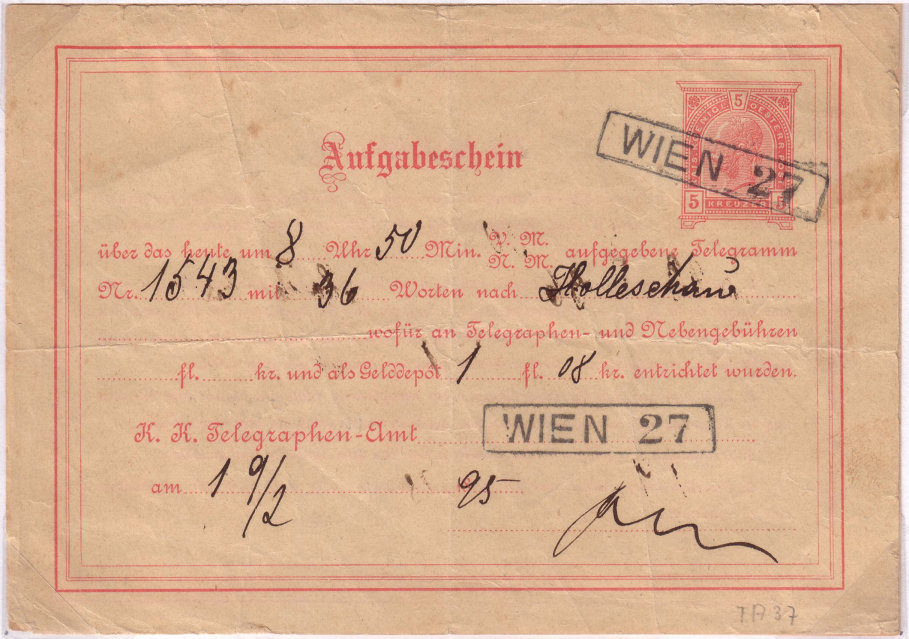
Image courtesy of Rolf Lamprecht.
This 1900. a change of currency. Now 10 Heller.
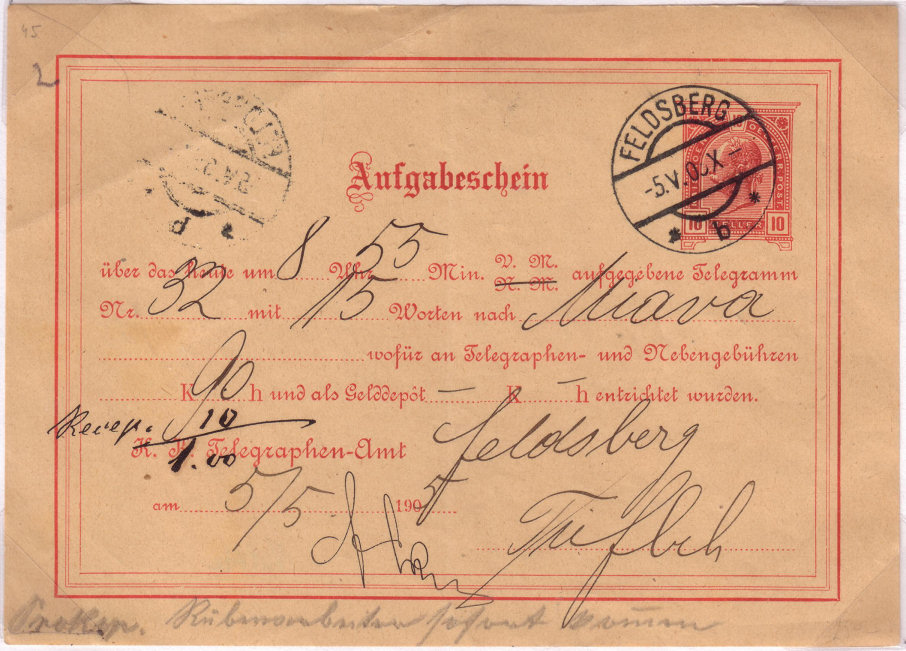
Image courtesy of Rolf Lamprecht.
This 1900. Dual language versions.
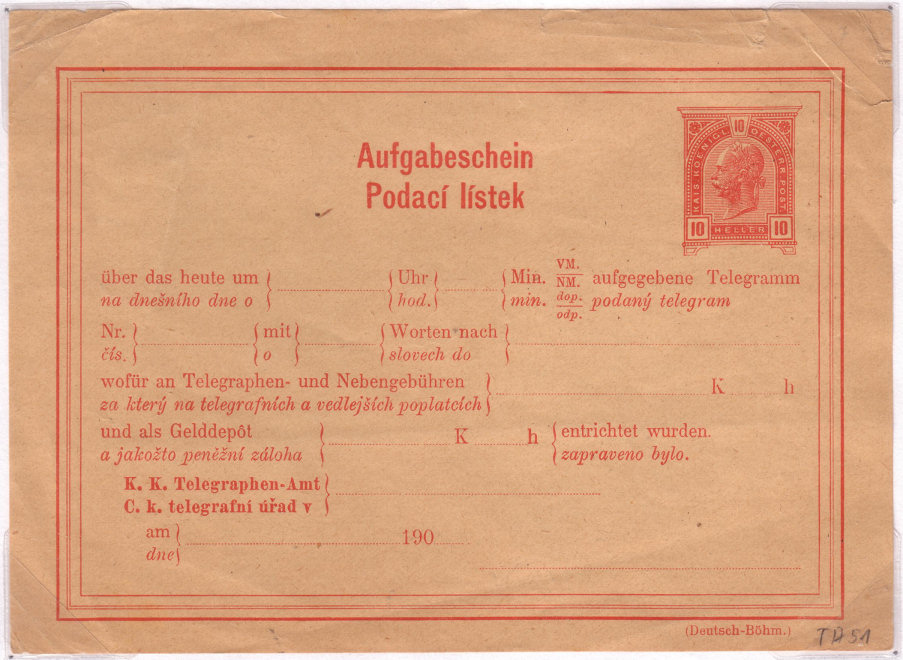
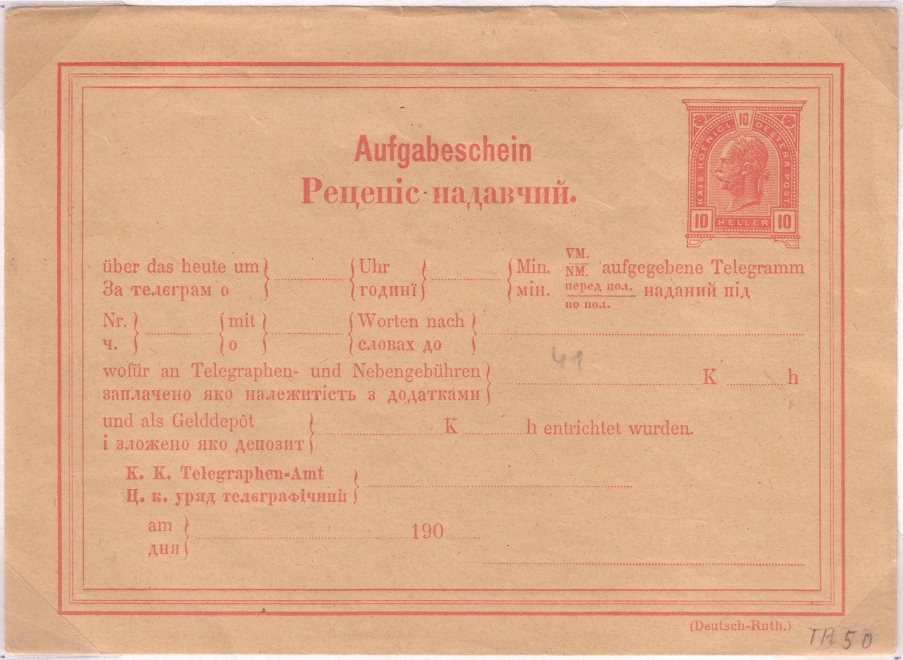
Bohemian on the left and Ruthenian on the right, as inscribed on them at bottom-right. Image courtesy of Rolf Lamprecht.
This 1908. a change of design, and the impressed stamp.
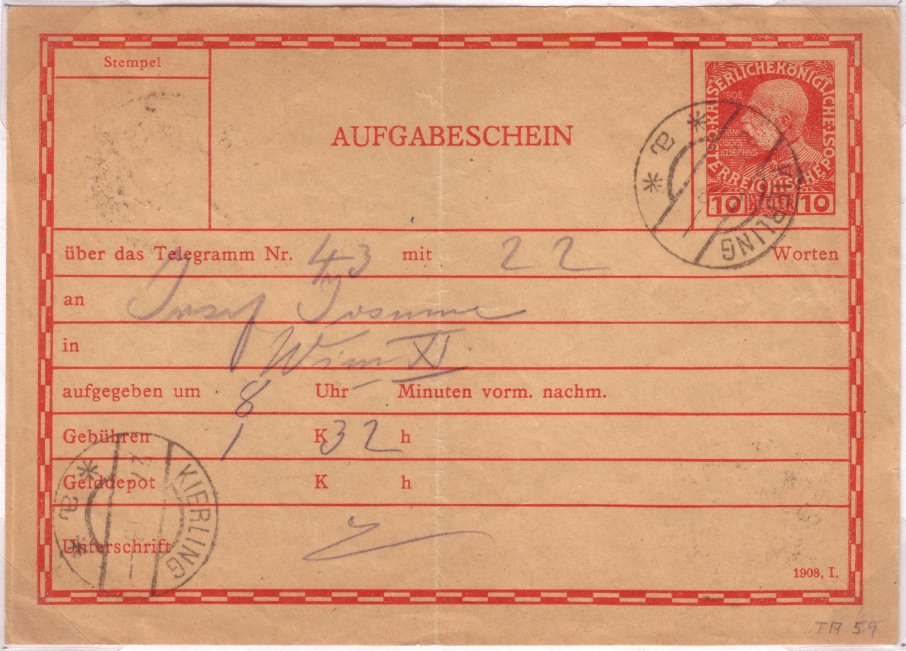
"1908, I." at the bottom-right. Image courtesy of Rolf Lamprecht.
This 1916. a change of the impressed stamp.
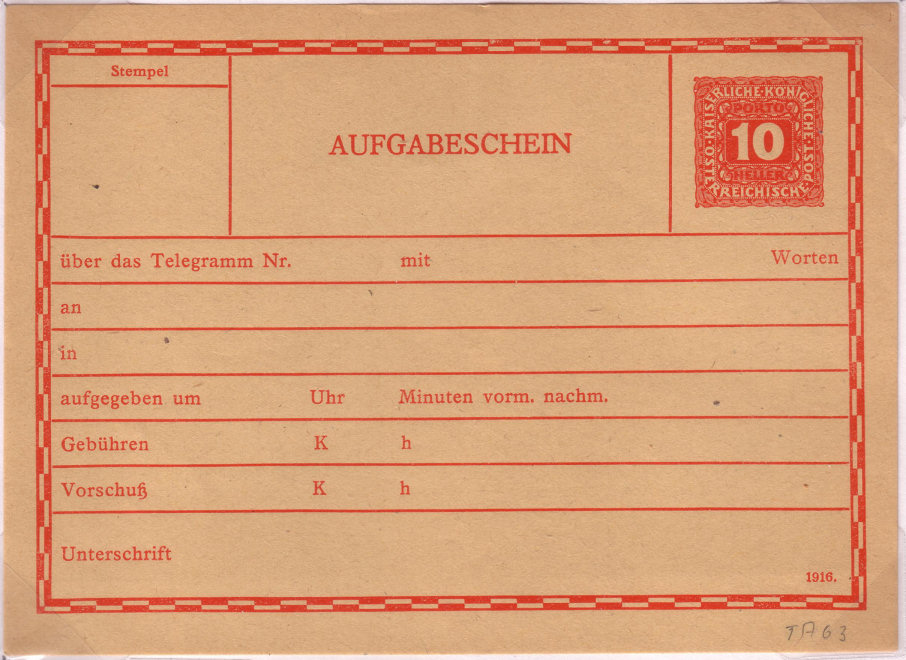
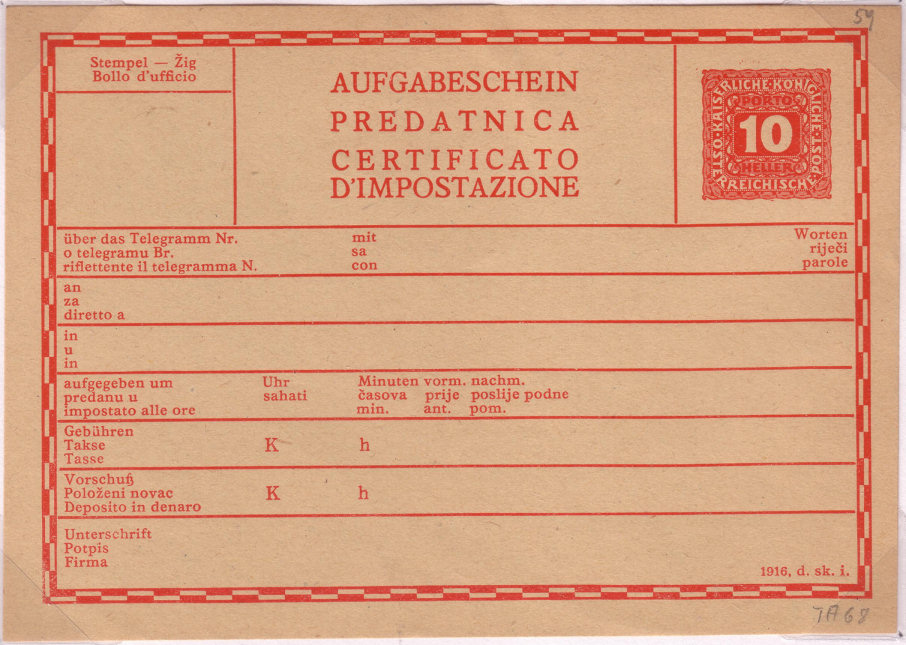
On the left, the card is in German with "1916." at the bottom-right. On the right, the card is in German, Serbo-Croat and Italian with "1916, d. sk. i." at bottom-right. Images courtesy of Rolf Lamprecht.
This 1919. A change to Fraktur script.
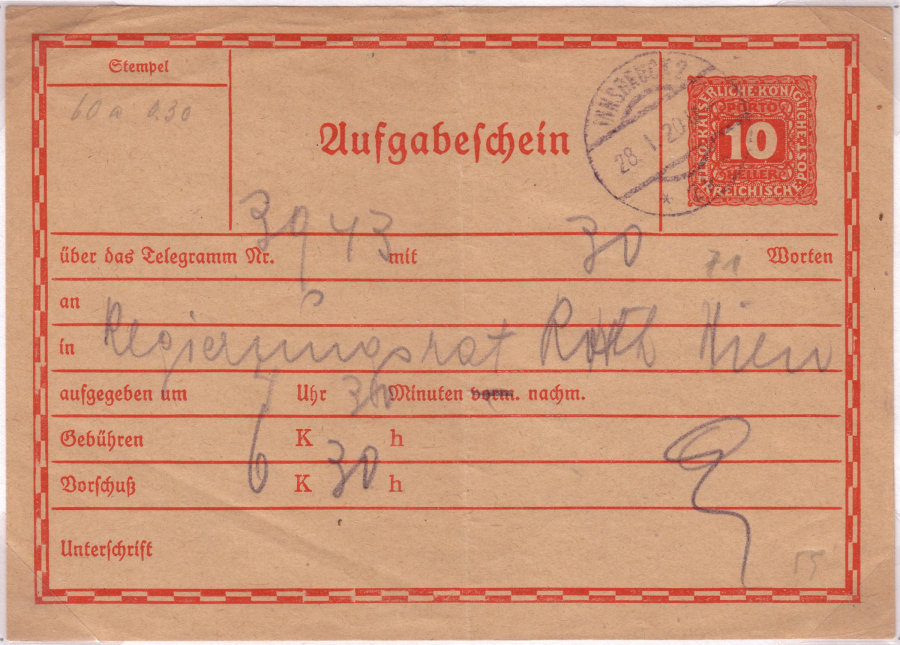
Nothing written at bottom-right. Image courtesy of Rolf Lamprecht.
This 1919. Another change of the impressed stamp, with an increase to 30 heller.
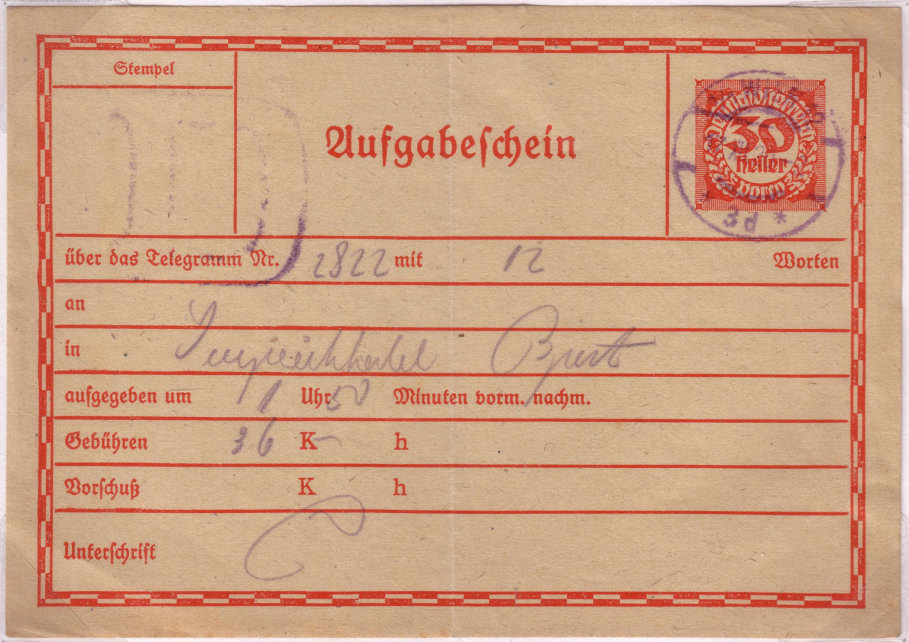
Image courtesy of Rolf Lamprecht.
This 1920. Another change of the impressed stamp, but now with no value.
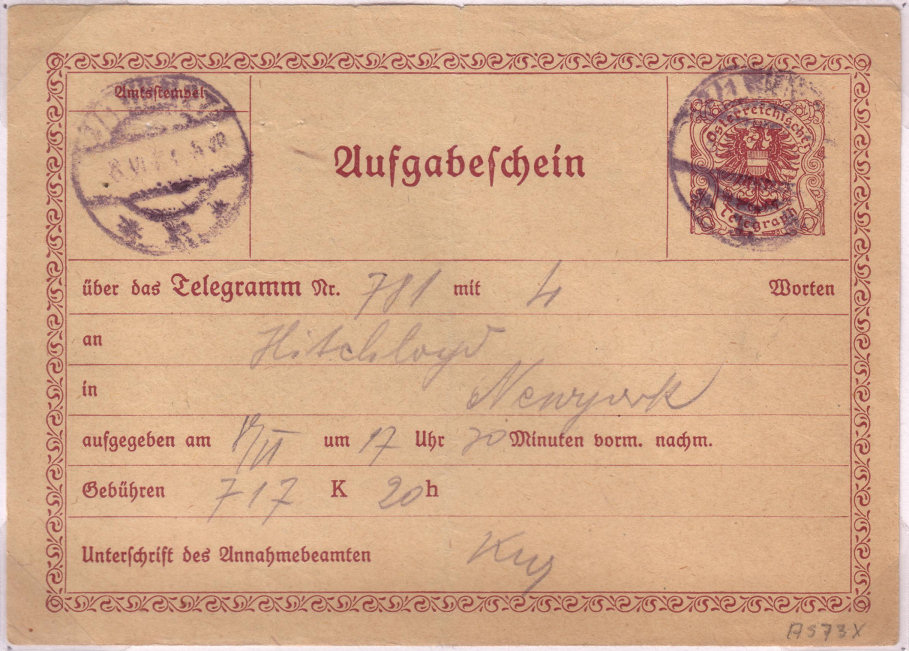
Image courtesy of Rolf Lamprecht.
This 1921. A change of colour and lines added behind telegram price.
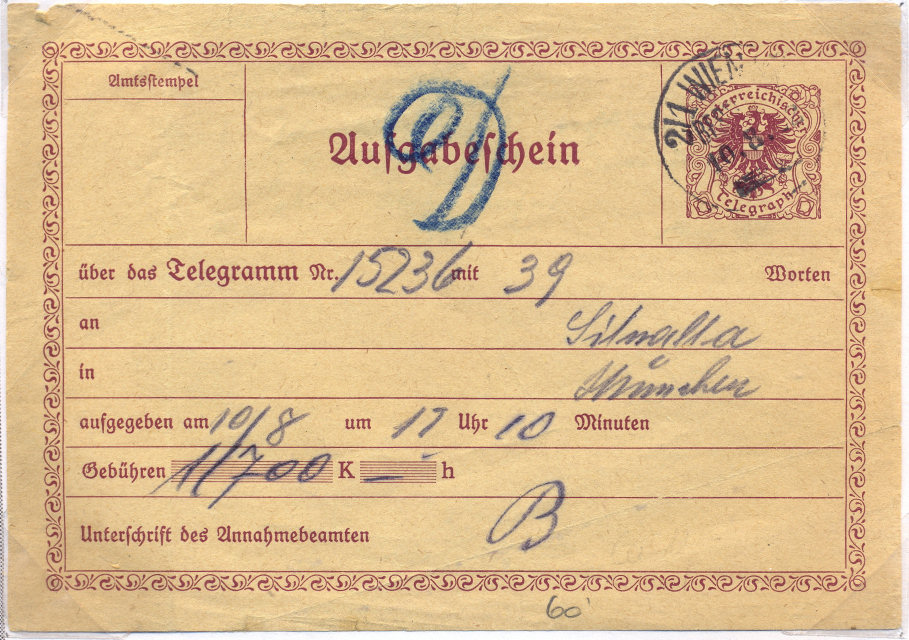
Image courtesy of Rolf Lamprecht.
This 1925. Impressed stamp moved to bottom-left.
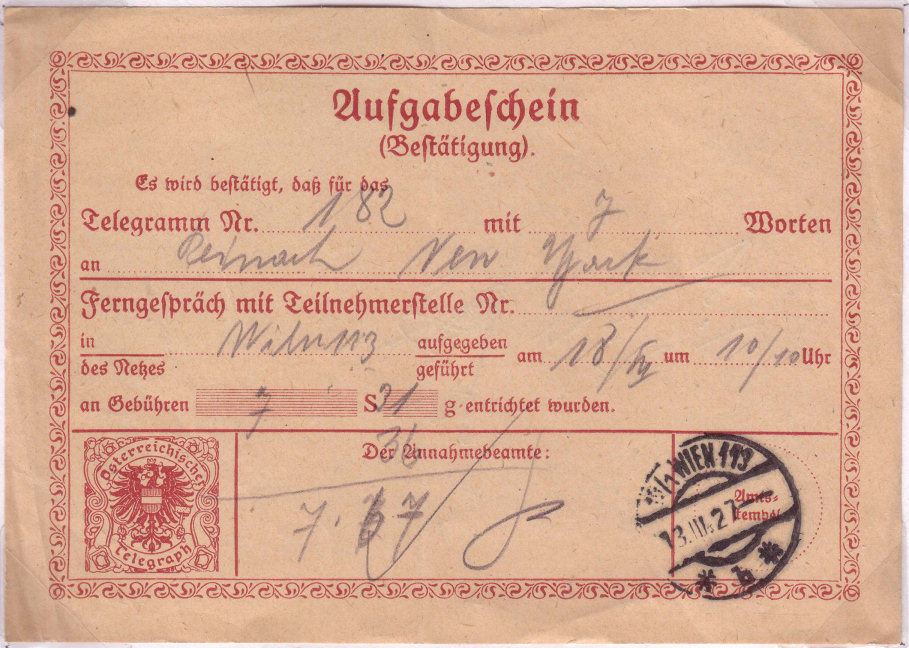
Image courtesy of Rolf Lamprecht.
Gebührenfreier Aufgabeschein (Free application form).
Form D. S. 838.
Two almost identical forms.
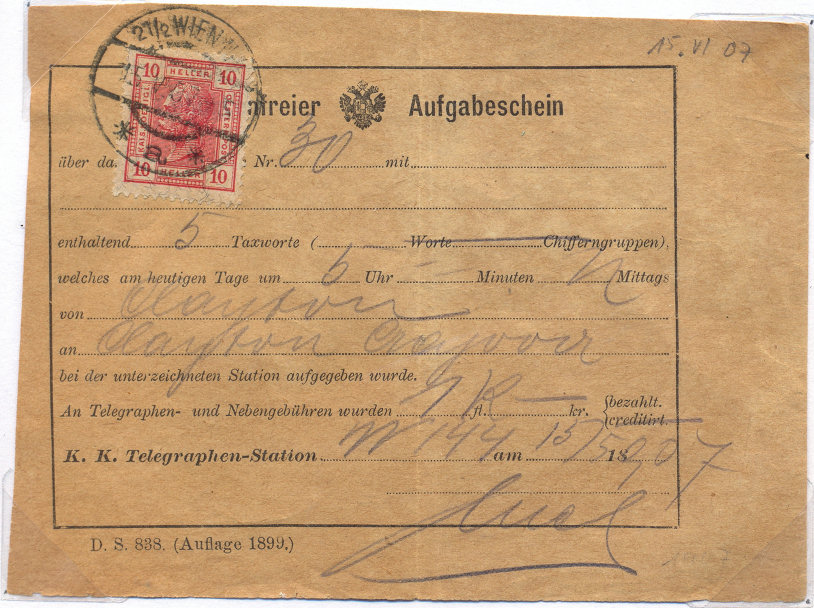 |
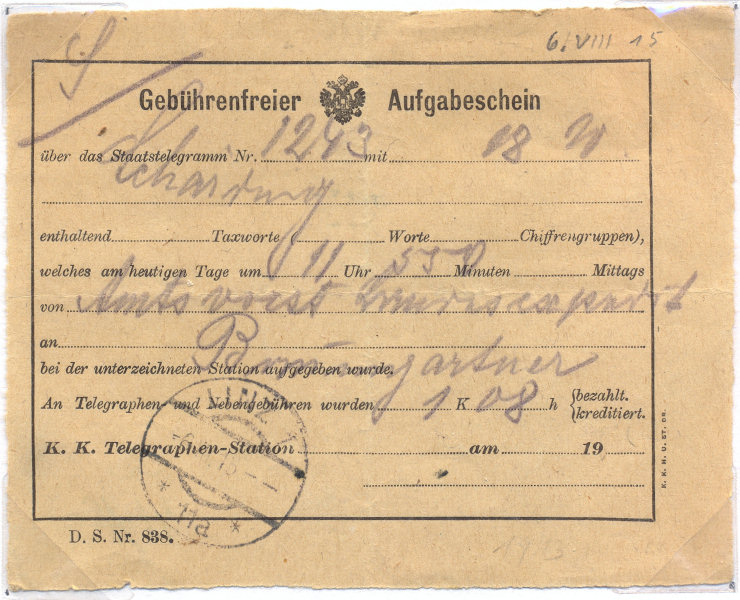 |
This has "D. S. 838. (Auflage 1899.)" at bottom-left, with pre-filled year of "18.."
It was used in 1907 with a 10 heller stamp. |
This has "D. S. Nr. 838." at bottom-left, and "K. K. H. U. ST. DR." up the right side.
It has a pre-filled year of "19.." and was used in 1915 without a stamp. |
Images courtesy of Rolf Lamprecht.
PNEUMATISCHER BRIEF - 1874?
Telegrafen - Drucksorte Nr. 61.
This half sized image shows an interesting item.
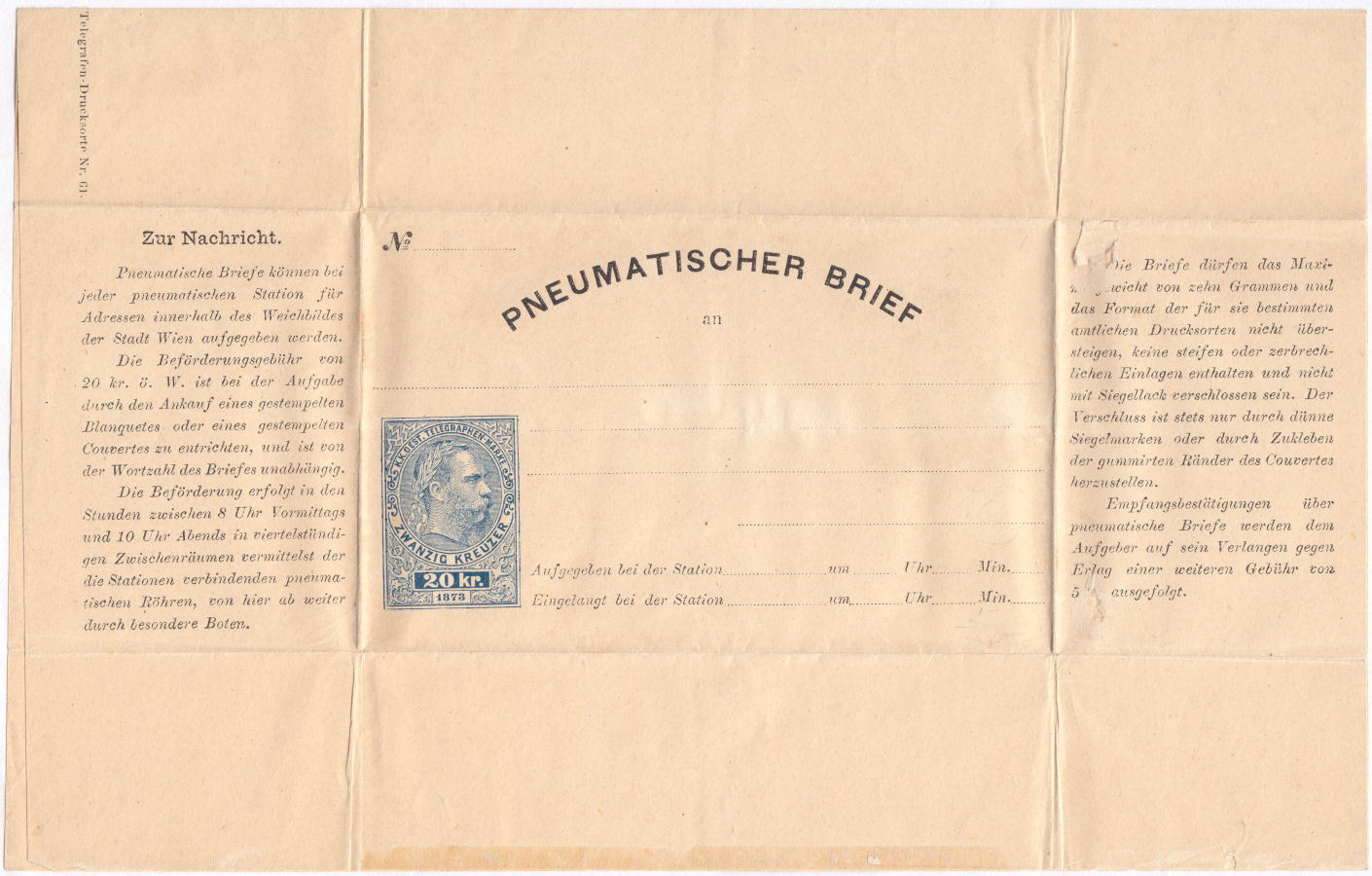
This is folded in half, but there is nothing printed on the parts that you cannot see.
the 20 kr stamp is normal size and printed directly onto the stationery.
On the left it says :
"Zur Nachricht.
Pnenmatische Briefe können bei
jeder pneumatischen Station für
Adressen innerhalb des Weichbildes
der Stadt Wien aufgegeben werden.
Die Beförderungsgebühr von
20 kr. ö. W. ist bei der Aufgabe
durch den Ankaufeines gestempelten
Blanquetes oder eines gestempelten
Couvertes zu entrichten, und ist von
der Wortzahl des Briefes unabhängig.
Die Beförderung erfolgt in den
Stunden zwischen 8 Uhr Vormittags
und 10 Uhr Abends in viertelstindigen Zwischenräumen vermittelst der
die Stationen verbindenden pneumatischen Röhren, von hier ab weiter
durch besondere Boten."
Meaning :
To message.
Pnenmatic letters can be sent at
any pneumatic station for
Addresses within the boundaries of
the city of Vienna.
The transportation fee of
20 kr. ö. W. is to be paid
through the purchase of a stamped
blank or a stamped
cover, and is
regardless of the number of words in the letter.
The transport takes place in the
Hours between 8 a.m.
and at 10 o'clock in the evening in quarter-hour intervals by the
pneumatic tubes connecting the stations, and from here on
by special messengers.
|
On the right it says :
"Die Briefe dürfen das Maximumgewicht von zehn Grammen und
das Format der für sie bestimmten
amtlichen Drucksorten nicht übersteigen, keine steifen oder zerbrechlichen Einlagen enthalten und nicht
mit Siegellack verschlossen sein. Der
Verschluss ist stets nur durch dünne
Siegelmarken oder durch Zukleben
der gummirten Ränder des Couvertes
herzustellen.
Empfangsbestätigungen
über
pneumatische Briefe werden dem
Aufgeber auf sein Verlangen gegen
Erlag einer weiteren Gebühr von
5
ausgefolgt."
Meaning :
"The letters must not exceed the maximum weight of ten grams and the format of the official types of printing intended for them, must not contain stiff or fragile inserts and must not be sealed with sealing wax. The closure is always to be done only by thin sealing marks or by gluing the rubberized edges of the envelope. Confirmations of receipt via pneumatic letters will be sent to the sender at his request for a further fee of 5." |
"Correspondence Cards.".
This half sized image shows a Correspondence Card.
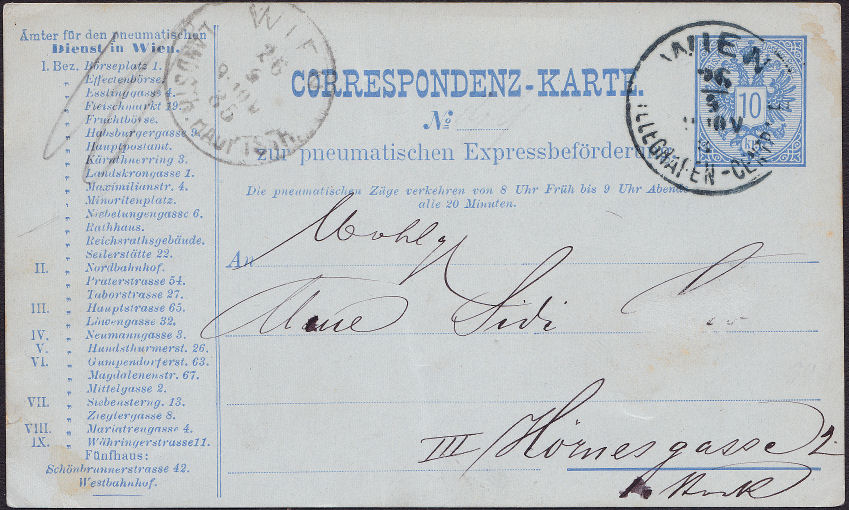
This has a plain back with only the written correspondence which is dated 26/4.85. On the left is a list of the Offices and areas served by them.
The address on the front identifies the office to which it should be sent. It has a 10 kr impressed stamp.
There appears to be nothing telegraphic about it.
Austro-Hungarian Empire — Map:
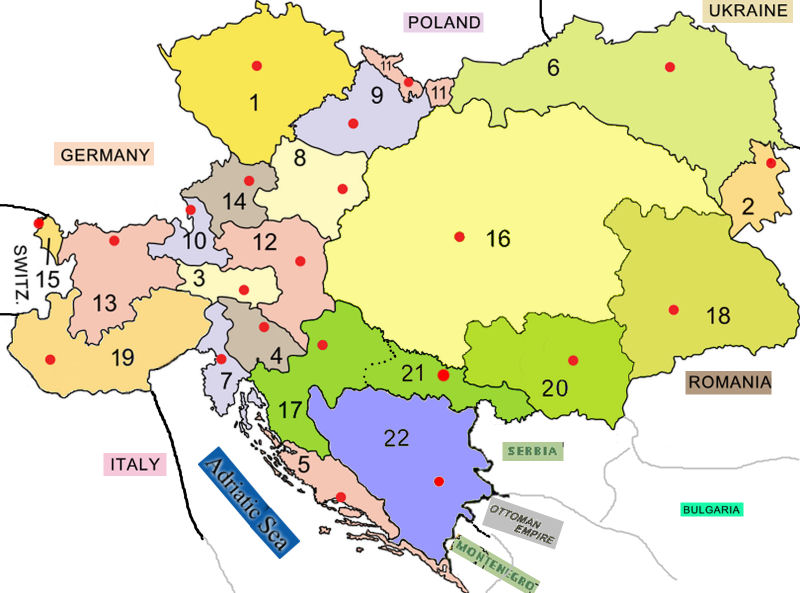
This map attempts to show the Austro-Hungarian Empire and surrounding influences.
The table below gives the key.
| # |
Province |
Language |
Capital |
AKA |
| 1 |
Bohemia |
Czech |
Prague |
Praha, Prag |
| 2 |
Bukovina |
Romanian and Ukrainian |
Czernowitz |
Chernivtsi, Cernăuţi |
| 3 |
Carinthia |
German |
Klagenfurt |
Celovec |
| 4 |
Carniola |
Slovene, German |
Ljubljana |
Laibach |
| 5 |
Dalmatia |
Italian |
Split |
Spalato |
| 6 |
Galicia |
Polish |
Lemberg |
Lviv, Lwów, Lwiw |
| 7 |
Littoral |
Italian, Slovene, Croatian, German |
Triest |
Trieste, Trst, Трст |
| 8 |
Lower Austria |
German |
Vienna |
Wien |
| 9 |
Moravia |
Czech |
Brno |
Brünn |
| 10 |
Salzburg |
German |
Salzburg |
Såizburg, Salisburgo |
| 11 |
Silesia |
German, Polish, Czech |
Troppau |
opava |
| 12 |
Styria |
German, Slovene |
Graz |
Gradec, Grác |
| 13 |
Tyrol |
German, Italian |
Innsbruck |
Dispruch |
| 14 |
Upper Austria |
German |
Linz |
Lentia |
| 15 |
Vorarlberg |
German |
Bregenz |
Brigenz |
| 16 |
Hungary |
Hungarian |
Budapest |
Boedapes |
| 17 |
Croatia |
Croatian |
Zagreb |
Agram, Zágráb |
| 18 |
Transylvania |
Romanian |
Alba Iulia |
Weißenburg, Karlsburg |
| 19 |
Lombardy |
Italian |
Milan |
Milano, Mailand |
| 20 |
Serbia and Temeschwar |
German, Illyrian (Serbo-Croat) |
Temeschwar |
Temeschburg, Temišvar |
| 21 |
Slavonia |
Croatian |
Osijek |
Esseg, Osek |
| 22 |
Bosnia Vilayet |
Bosnian, Croatian, Serbian |
Sarajevo |
Sarajewo |
"Envelopes.".
| This does not have the year on it, but someone has written 1860 in pencil. That may have been from an enclosure, by I do not have that. |
Sent from Klausenburg (now Cluj-Napoca, Romania), for local delivery by hand.
This does not have a "No_" at top-left as seen on the one below, so I think it is earlier.
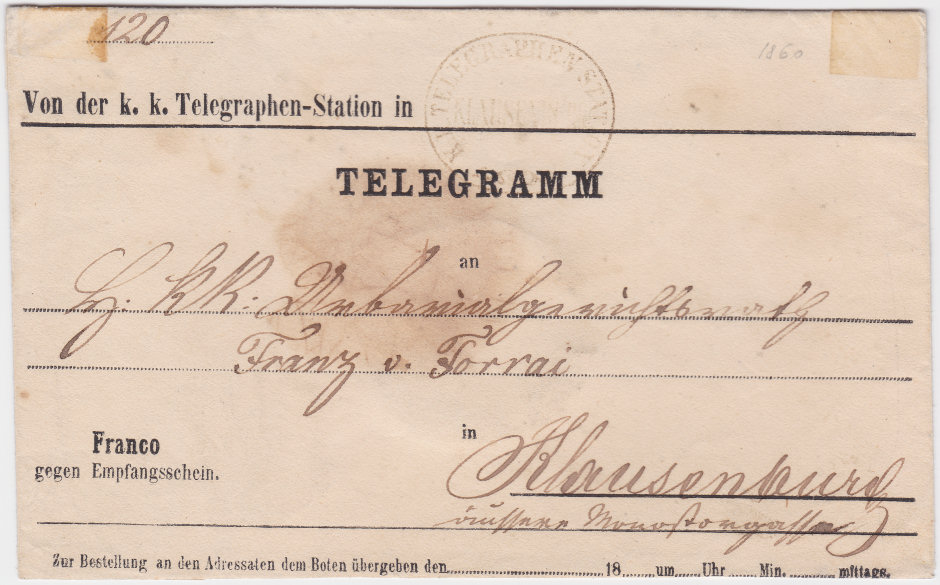 |
|
The back has a wax seal of Klausenburg.
This style design was later used for paper seals.
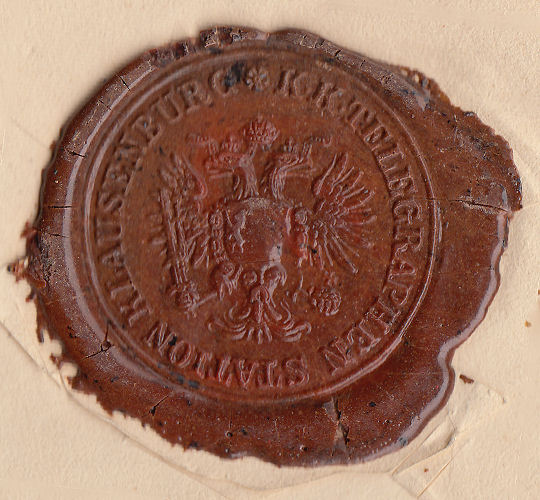 |
| One of mine. |
| This does not have the year on it, but this kind of postage stamp was in use from 1858 to 1860. |
Sent from Milan, received at Spalato (Split) on the Dalmatian coast, where it was put into this envelope,
given the Spalato wax seal, and mailed to the island of Curzola (now Korčula, Serbia).
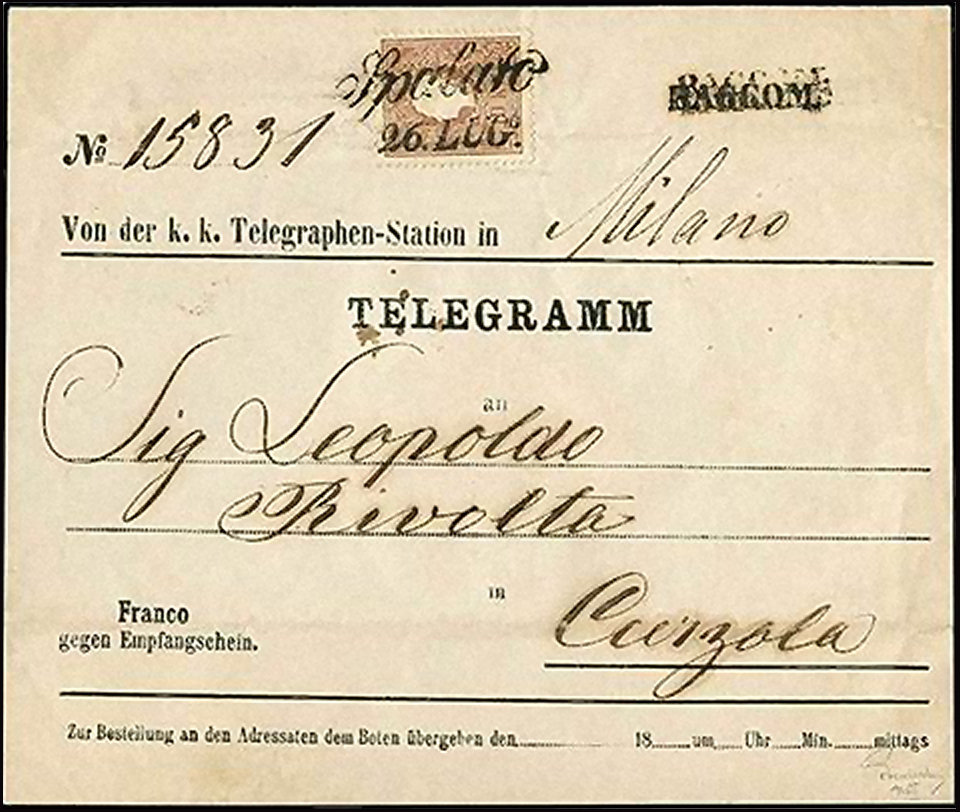 |
|
The back has the wax seal and an additional 10Kr stamp.
The stamps are cancelled with Spalato and the date of July 26.
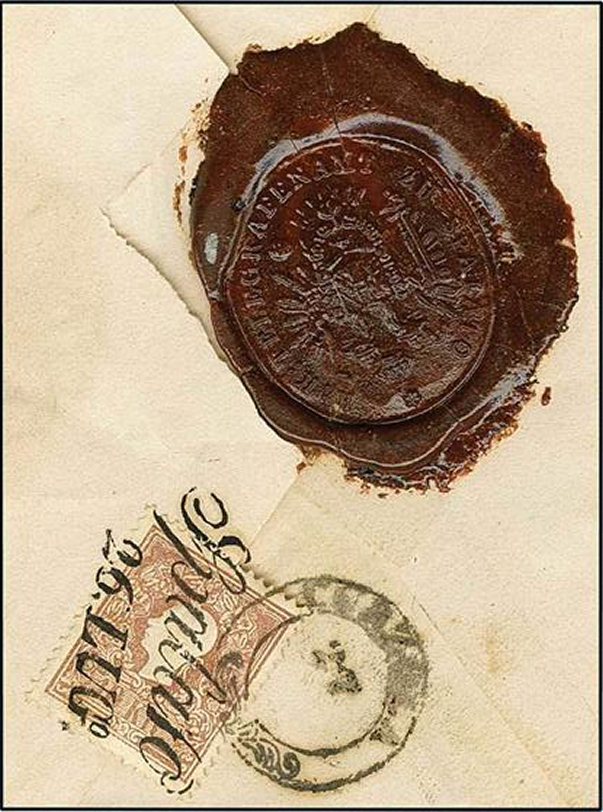 |
| Images courtesy of Fabrizio Ferrari. |
| This does not have the year on it. It is smaller than the earlier ones. |
Sent from Leipnik, Moravia, for delivery to Wesseličko, Moravia by hand, apparently via rail.
At top-center is "Dem Boten sind keine Geschenke zu geben" or "There is nothing to give to the messenger"
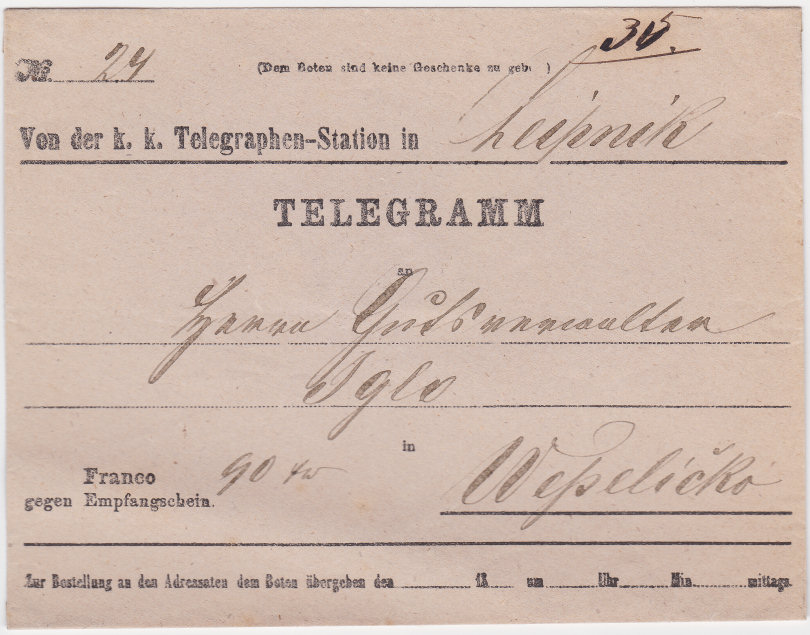 |
|
The back has a paper seal of Leipnik.
Around the top could be "A.R.K.F.NORDBAHN".
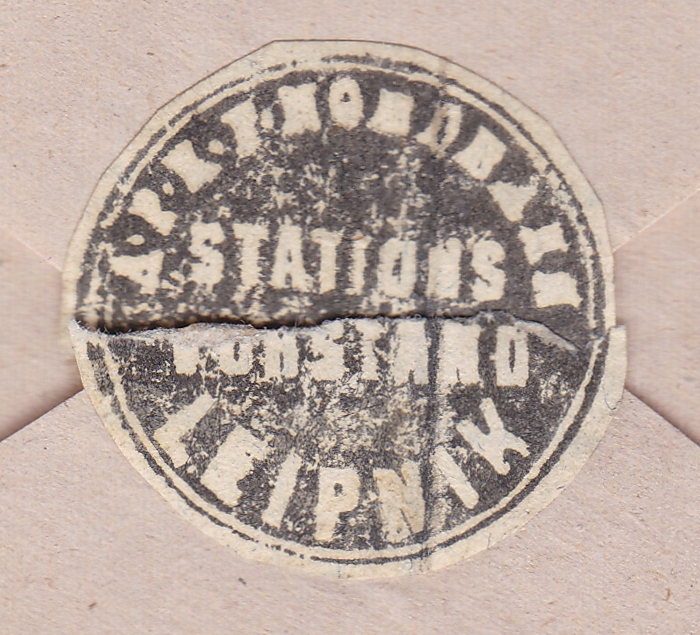 |
| One of mine. |
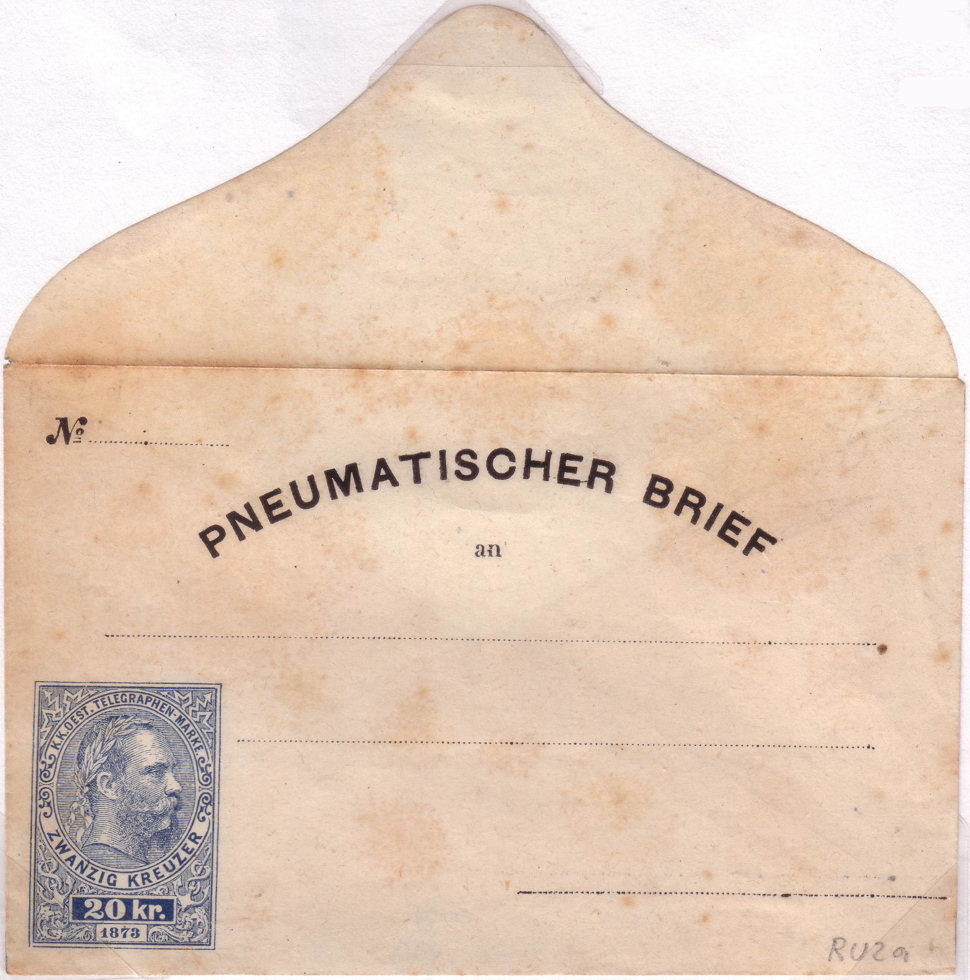 |
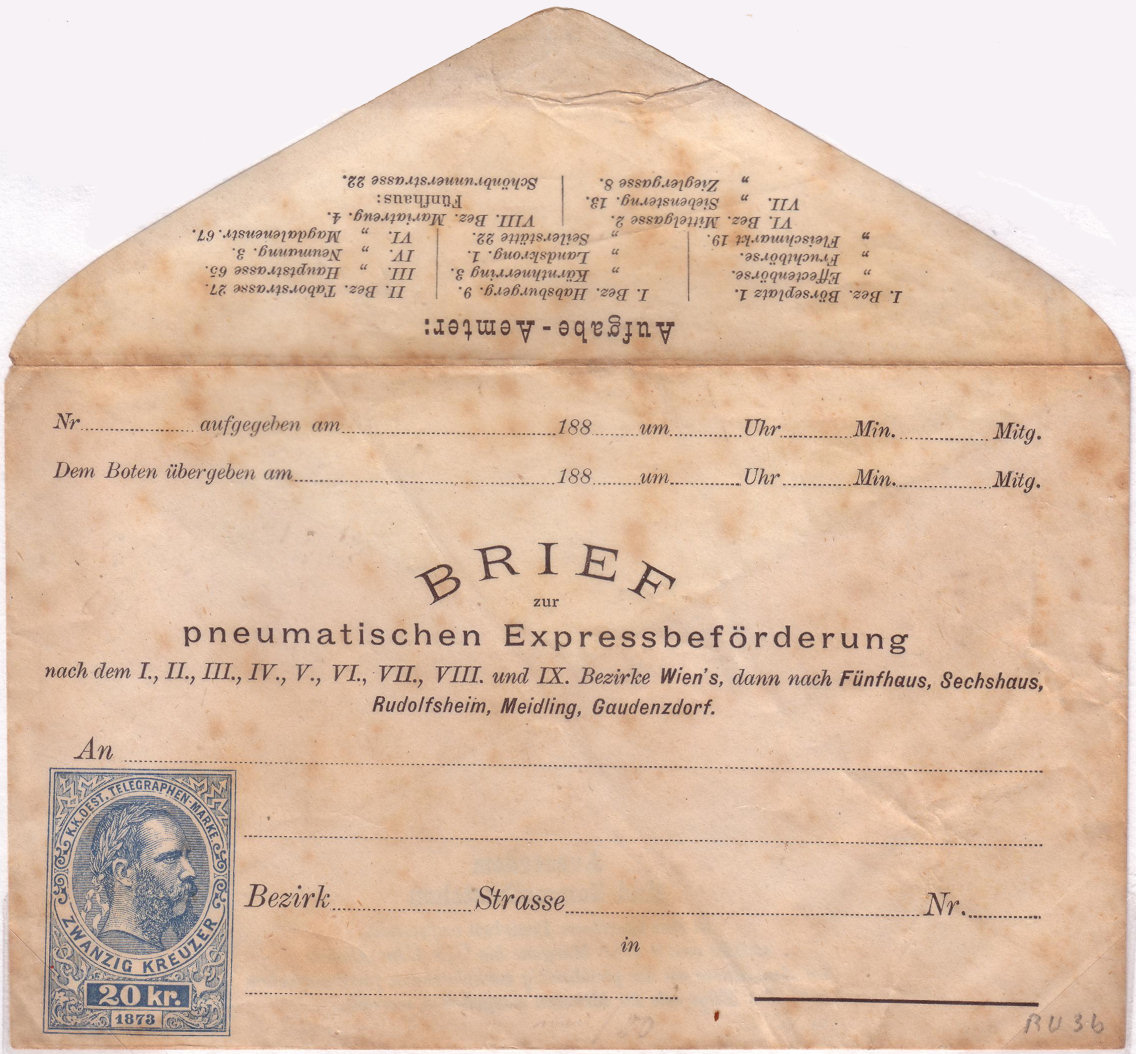 |
| Envelope of about 1875 - fairly simple, with a 29kr impressed stamp. Image courtesy of Rolf Lamprecht. |
Envelope of about 1881. The back gives the locations of 17 offices in 9 different areas of Vienna |
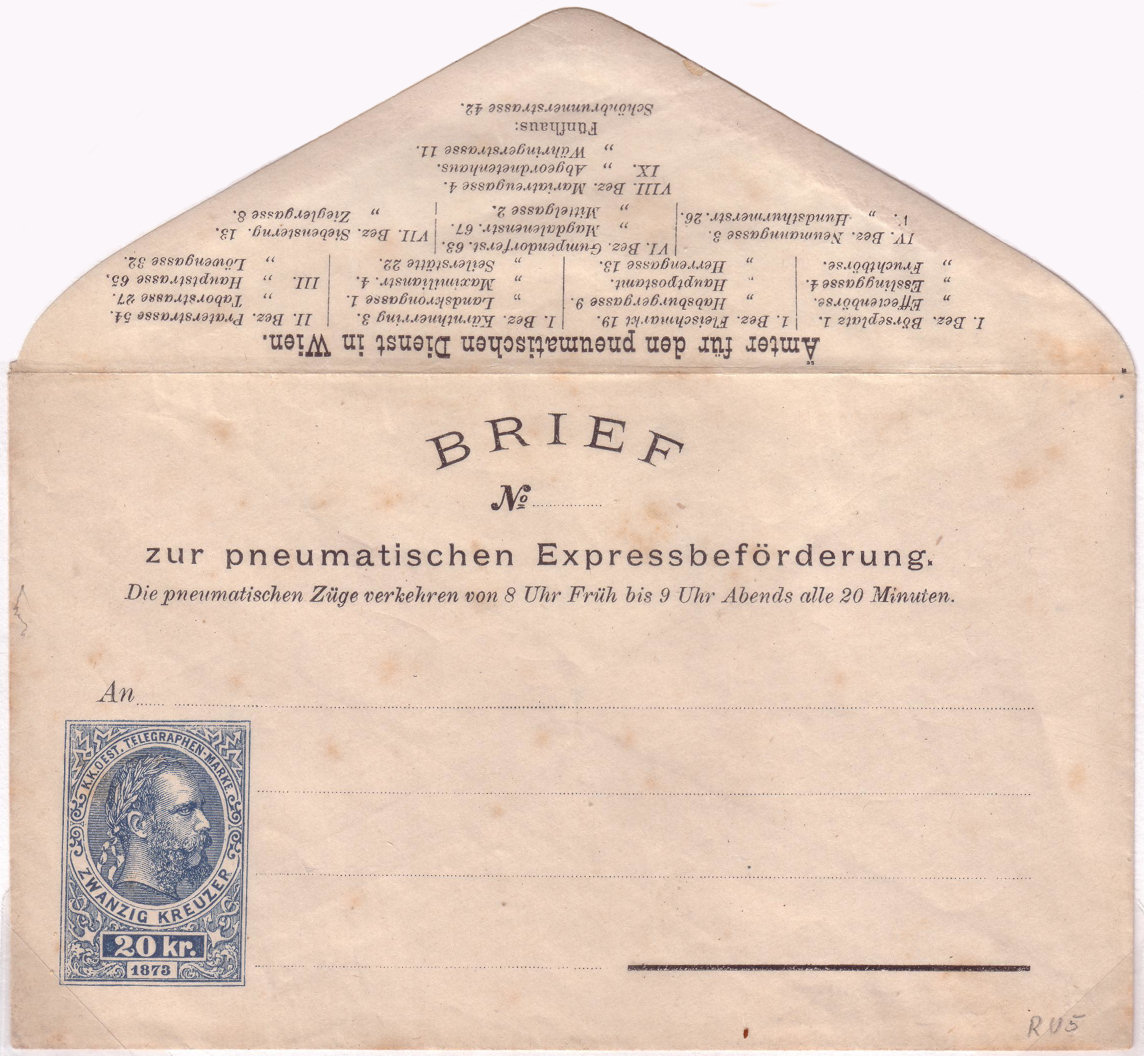
Envelope of about 1882. The back gives the locations of 27 offices in 9 different areas of Vienna. Image courtesy of Rolf Lamprecht
This half sized image shows the front and back of a letter used in 1885.
The back gives the locations of 30 offices in 9 different areas of Vienna.
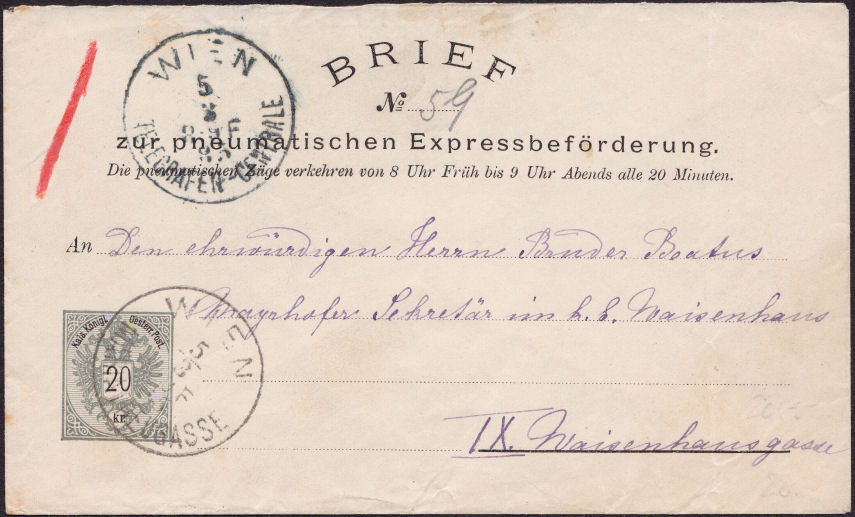
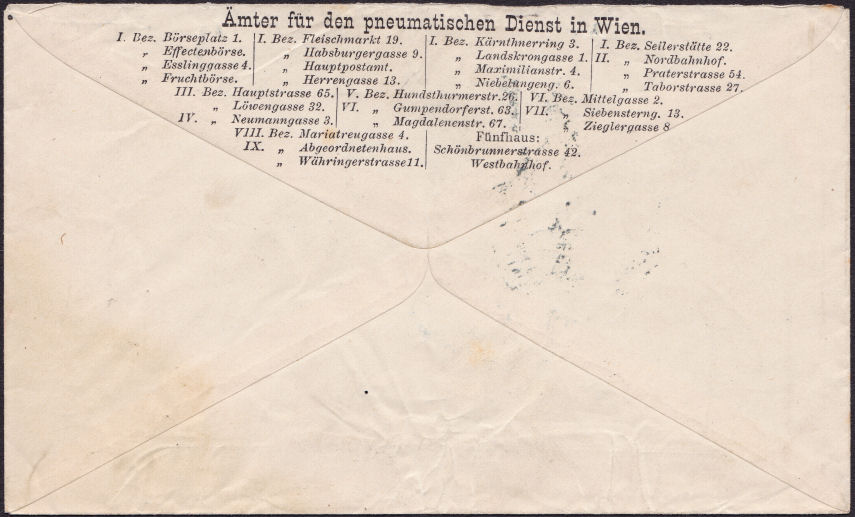
This letter has a similar list of Offices on the flap of the back. The front has a 20 kr impressed stamp, and is dated 5/3/85.
Telegram Seals.
A range of different seals were used on Austrian telegrams at different times.
This half sized image shows a sample of them.
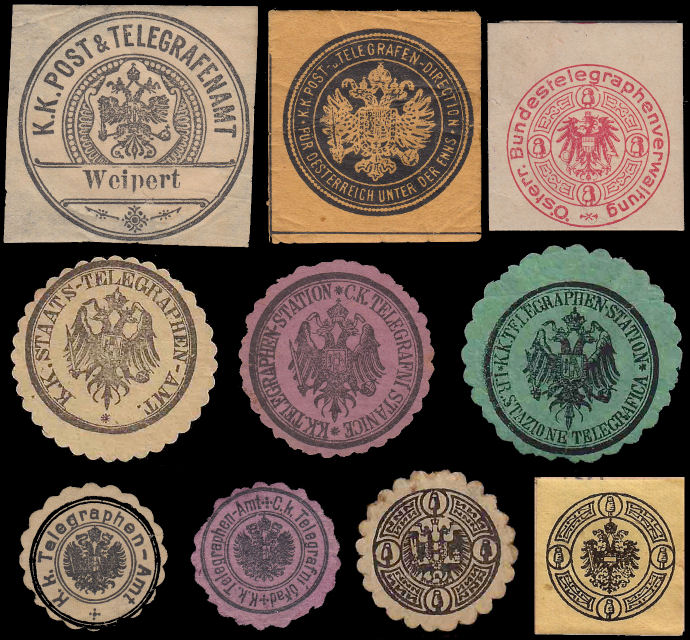
Steve Hiscocks made a start on cataloguing seals of the world in a book he published in 2007.
It was his hope to update it later, but unfortunately that was not to be.
His original book can be viewed at
Telegraph Seals: A World Catalogue. There are links from the pages to my updates.
Alternatively you can view the latest page for Austria.
Comments, criticisms, information or suggestions are always welcome.

Please include the word 'Telegraphs' in the subject.
Last updated 12th. February 2024
©Copyright Steve Panting 2012/13/14/15/16/17/18/19/20/21/22/23/24 except where stated.
Permission is hereby granted to copy material for which the copyright is owned by myself, on condition that any data is not altered and this website is given credit.


